INNOVATION & TECHNOLOGY

GLOBAL
ENERGY

VULCAN COMPLETIONS P.22 MYSEP P.24 ROTECH SUBSEA P.26 CEGAL P.28 VIPER INNOVATIONS P.30 ARNLEA P.31 INTERVENTION RENTALS P.32 ASSET 55 P.33 FIELDNODE P.34 HGF P.35 BRODIES P.36 LEYTON P.37 READ ONLINE AT In this issue... INNOVATION & TECNOLOGY MAY 2024 - ISSUE 80
ENERGY NEWS
MAP
PROJECTS
FocusAI Discover the AI Revolution That's Transforming The Energy Industry READ ON PAGE 4
INNOVATION & TECHNOLOGY LEGAL RENEWABLES CONTRACT AWARDS DECOMMISSIONING STATS & ANALYTICS EVENTS

At Wood, our people are what sets us apart, a global community of inquisitive minds. Each one committed to making a difference, to lifting each other up, to showing courage in the face of problems.
As part of Team Wood, you’ll be challenged and inspired to power progress for our people, our business and our planet. Join us as we embark on a quest to unlock solutions to the world’s most critical challenges. careers.woodplc.com
Our people make it possible.












A WORD FROM OUR EDITOR
Welcome to the May and 'OTC' edition of ‘OGV Energy Magazine’ where we will be exploring the theme of ‘Innovation and Technology’
A big thank you to our front cover partner GDi, where you can read all about the launch of their latest AI product on pages 4 and 5.

In this packed publication, we also have contributions on this theme from Vulcan Completion, Mysep, Rotech Subsea, Cegal, Viper Innovations, Arnlea, Intervention Rentals, Asset 55, Fieldnode, HGF and ESWL, along with our monthly contributions from Brodies and Leyton.
The rest of this month’s magazine as always provides you with a review of the Energy sector in the North Sea, Europe, Middle East and the USA, along with industry analysis and project updates from Westwood Global Energy Group and The EIC.
Warm regards Dan Hyland - Director
3 CONTENTS FOLLOW US @OGVENERGY OGVENERGY @OGVENERGY OGV-ENERGY OGV COMMUNITY NEWS GLOBAL ENERGY NEWS ENERGY PROJECTS MAP MONTHLY THEME LEGAL INNOVATION RENEWABLES CONTRACT AWARDS DECOMMISSIONING STATS & ANALYTICS EVENTS P.09 P.10 P.18 P.20 P.36 P.37 P.39 P.40 P.42 P.44 P.46 4 8 20 26 31 37 40 34 10 VIEW THE OGV MAGAZINE ONLINE AT www.ogv.energy/magazine
22
Discover the AI Revolution That's Transforming The Energy Industry FocusAI
GDi’s latest application, FocusAI leverages the latest LLM technology along with tailored workflows to transform how text data is generated within the oil and gas industry.
Asset owners have been enabled to operate their assets beyond design life through the deployment of innovative data analytics –including more recently machine learning technology – to optimise operations. The focus of these analytic systems to date has predominantly been numerical data.
A significant gap remains, where text-based information such as work instructions has not been subject to the same analysis and therefore remains of highly variable quality.
FocusAI allows tailored workflows to be defined to ensure rapid, part-automated, and high-quality output is consistently generated in response to the user input. GDi have engaged with select industry leaders to identify and validate several use cases, some examples of which are noted below.
Use case examples
• Work Order Generation & Close Out
The application provides users with a selection of templates and use cases, making it straightforward to execute tasks efficiently and effectively. This feature not only enhances user experience but also streamlines the process flow within organisations.
A standout feature of FocusAI is the recording and display of interactions between users and the large language model (LLM) in a conversational style. This functionality offers an unprecedented level of auditability and discrete insight into the decision-making processes at the core of operations. The interaction mimics a real-life dialogue between a technician and a technical authority, collaboratively navigating through tasks to arrive at the best possible solutions.
The Chat function allows users to interact with the LLM in a manner that is tailored specifically to their industry and business needs. This customisation ensures that the advice and solutions offered are relevant and directly applicable, maximising the utility and impact of its output.
Is FocusAI safe?
Unlike many AI applications, FocusAI was designed to be private-first and is achieved in part by hosting the LLM ourselves. Strict segregation of customer data guarantees all your information remains confidential. We use modern end-to-end encryption methods ensuring your data is secure in transit and at rest.
Case Studies
Work Order

The advent of Large Language Models (LLM) has created a significant opportunity to transform technical writing within industrial settings. A LLM is a type of AI that uses deep learning techniques and prodigious data sets to understand, generate, and refine text content.
Introducing FocusAI
GDi’s latest application, FocusAI leverages the latest LLM technology along with tailored workflows to transform how text data, like a Work Instruction, is generated within the oil and gas industry. Not only will users of FocusAI gain significant insight through access to extended knowledge bases but they will also be guided in an efficient and structured process to complete their objectives. FocusAI ensures that the huge potential of this technology is applied in a focussed, relevant, and secure manner that could revolutionise daily tasks common within the industry.

• Anomaly/Inspection Report Generation, Assessment & Close Out
• Preventative Maintenance Generation
• Root Cause Analysis Review
• Contractual Review
• Performance Standard Generation
• RBI Assessment
Key Features
FocusAI revolutionises task execution with its intuitive user interface, designed to minimise the need for training. This user-friendly approach allows employees to quickly adapt to the system, facilitating a smoother transition and integration into daily operations.
GDi have collaborated with a UKCS O&G operator to prove how FocusAI can be deployed within the context of Work Order generationtransforming a task that occurs thousands of times every day throughout the industry.
Through this collaboration, GDi developed a thorough understanding of the work order process, key requirements, and the details within. Defining the work order process and aligning with procedures meant that the output generated from FocusAI was precise and high quality, verifying that all users responsible for creating work orders did so in compliance with specified corporate procedures & standards.
Result:
• Removal of poor-quality work order content and their associated risks
• Reduced reporting time by up to 30%.
• Increased productive time.
• Removed issues with procedural compliance.
www.ogv.energy I May 2024
4 COVER FEATURE

Preventative Maintenance Generation
In another collaborative approach, GDi set out to prove how, with minimal input information, FocusAI can generate a preventative maintenance regime for equipment on an offshore asset. Using two input fields
- Manufacturer & Model - FocusAI asked relevant questions to the user about operating conditions and equipment age before generating a concise and accurate regime. This output can be exported and then imported into a third-party maintenance management system. The potential for this single use case could save asset owners millions of pounds in maintenance builds and audits.
Result:
• Rapid generation of high-quality preventative maintenance regimes.
• All regimes generated in a precise and consistent supporting adoption.
• Aligned to procedural requirements.
• £Ms saved by removing requirement for outsourced consultancy.
Anomaly Assessment
Working with a long-standing client, GDi tailored FocusAI to drive improvements into the assessment of anomalies found during routine inspection programmes.
The client presented the variance and poor-quality output of current anomaly assessments and engaged GDi to carry out discovery sessions where FocusAI was configured to guide any user on how to accurately review, assess the risk, and recommend follow up actions in a compact, consistent, and high-quality manner.
Poor anomaly assessments introduce risk and cost into operations by, for example, missing data leading to an event, or low standard information resulting in significant inefficiencies in remediation. In this example, FocusAI eliminated poor quality, ensured compliance with procedures, and provided consistent output.
Result:
• Implemented robust control where procedural guidance was lacking.
• Improved risk assessments by removing ambiguity within the assessment.
• Removal of poor-quality anomaly assessments.
• Reduced assessment time by up to 30%.
• Removed any issues with procedural compliance.
Ultimate benefits
FocusAI significantly enhances organisational operations by aligning the vast capabilities of large language models with daily tasks. It not only supports but also amplifies the technical acumen of the workforce, ensuring that data quality is enriched and maintained right from the source.
Through focused upskilling and broadening the technical knowledge of employees, organisations are poised to thrive. Streamlining workflows and partially automating routine tasks have already shown a marked improvement in productivity in pilot studies. These adjustments reduce the administrative overhead commonly found in industrial environments, thus freeing up more time for productive activities and significantly lowering operating costs.
In sectors where maintaining critical infrastructure is both crucial and costly, innovative technologies like FocusAI are essential. They maximise operational periods and provide a cost-effective means of managing assets. By ensuring adherence to procedures and processes, and actively notifying users of any deviations, FocusAI promotes consistent compliance across all levels of operation.
One of the notable impacts of implementing technical compliance in complex tasks is the reduction in challenges associated with employee turnover. By leveraging its extensive knowledge base, FocusAI facilitates ongoing learning and continuous improvement within the workforce.
By integrating into workflows in procedurally intensive industries, FocusAI is positioned to revolutionise operations. While no application has yet fully achieved this ambitious objective, FocusAI is on track to transform how compliance is managed within complex organisations, setting a new standard for technological integration.
About GDi
Since its inception in 2016, GDi has positioned itself as a key technology provider of specialised solutions to asset intensive industries such as oil and gas, utilities, and power generation. GDi’s technology stack features innovative software applications that enable cost-effective and efficient service delivery. By utilising these proprietary cuttingedge applications, GDi supports its customers in modernising and digitally transforming their business processes and operations.

5 COVER FEATURE ENGINEERING. INNOVATION. AUTOMATION.























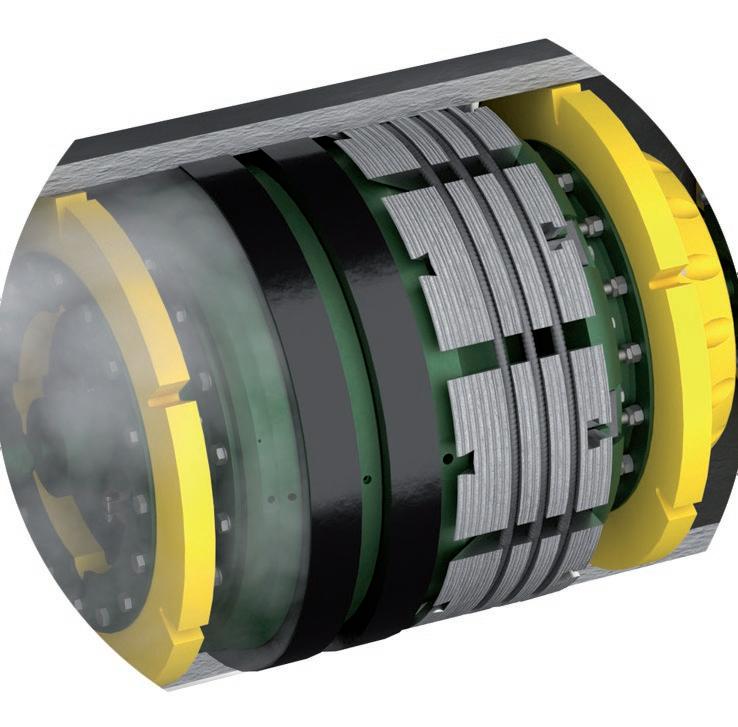

























Editorial
+44 (0)
Advertising
+44
Design
Editorial




























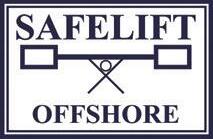


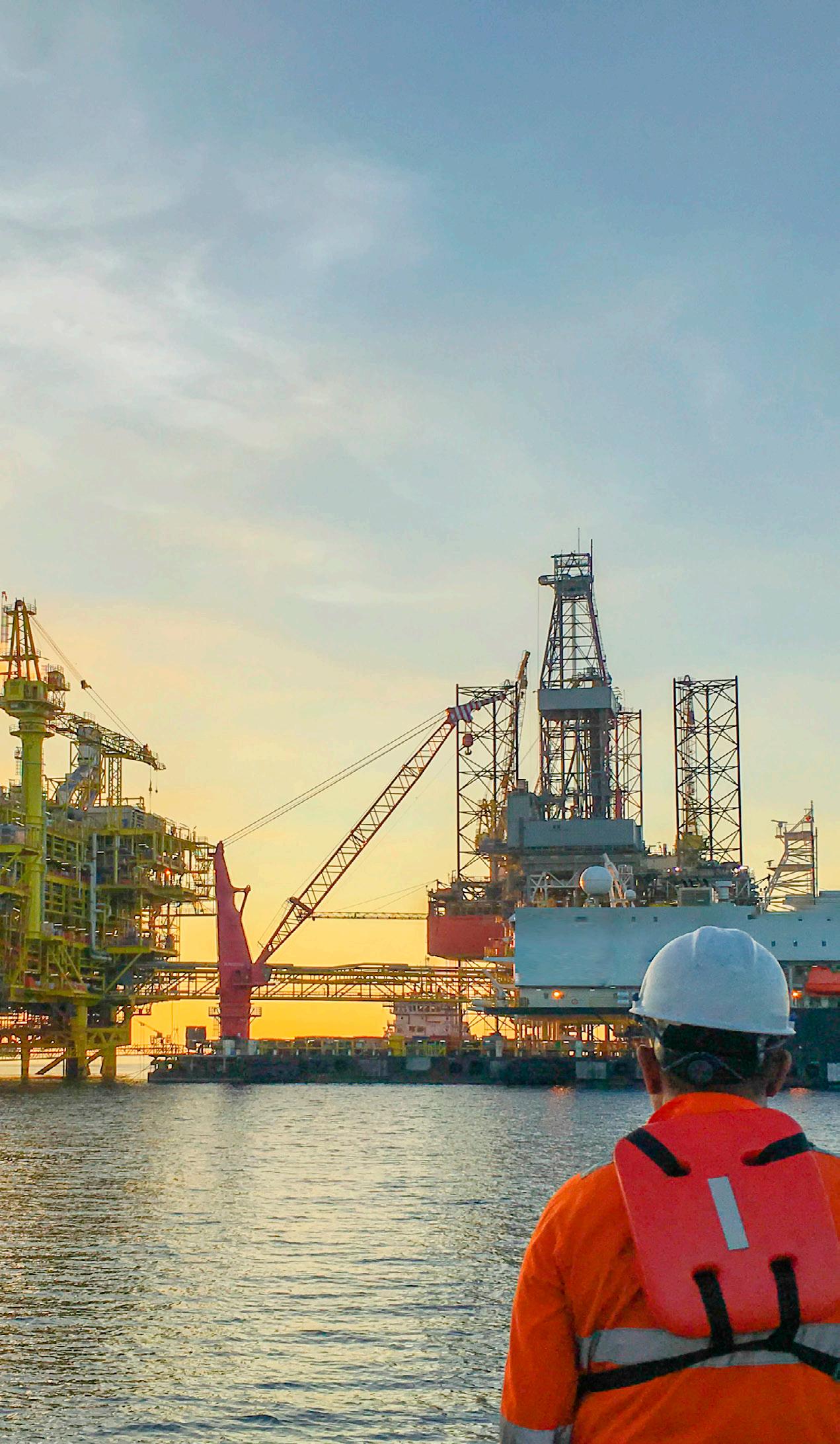






7 HEADER www.quanta-epc.co.uk YOUR ASSET IN SAFE HANDS Safe, efficient and low-cost delivery of Asset Management projects, ensuring best value every time. Operations Maintenance Repair orders Technical support
The views and opinions published within editorials and advertisements in this OGV Energy Publication are not those of our editor or company. Whilst we have made every effort to ensure the legitimacy of the content, OGV Energy cannot accept any responsibility for errors and mistakes. OUR PARTNERS FEATURING TRAVEL MANAGEMENT PARTNER LOGISTICS PARTNER Leading provider of logistics services to this industry, offering its customers airfreight, road freight, sea freight, project forwarding, customs compliance, training and consultancy, packing, crating, lashing & securing services warehousing, distribution, freight management, rig relocation and mobilisation services and offshore logistics. The ATPI Group delivers world-leading corporate travel and events solutions to organisations operating in a variety of specialist sectors around the world.
Disclaimer:
newsdesk@ogvenergy.co.uk
084 114
1224
office
@ogvenergy.co.uk
114
(0) 1224 084
Jen McAdam Cali Gallow Ben Mckay
Tsvetana Paraskova VIEW our media pack at www.ogv.energy/advertise-with-us or scan the QR code ADVERTISE WITH OGV



OGV Community News
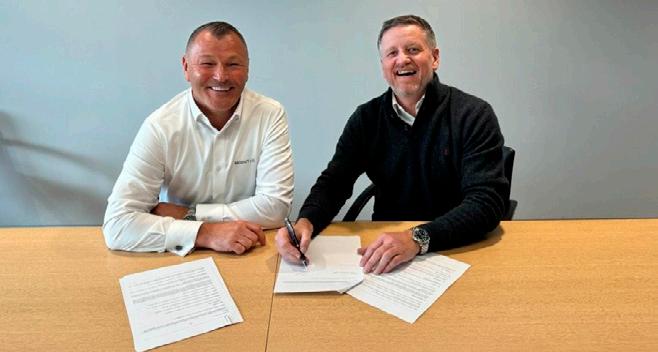
Provider of Marine & Offshore Living Quarters & Technical Buildings, Modutec, Acquires Marine Electrical Specialists SeaKing Group
UK-headquartered Modutec has today announced a majority investment in Birkenhead based electrical engineering group SeaKing.
SeaKing provides electrical engineering and installation services to its customers in the marine, defence, renewables, and offshore sectors. Recognised internationally for their expertise in hazardous area electrical works, SeaKing undertakes major overhaul of assets through to minor maintenance activities.
SeaKing, which employs 105 staff, enhances Modutecs offering and closely follows the integration of HVAC specialists CO-AT Marine as part of the expanding portfolio.

The positive trajectory continued in 2023 as Semco Maritime accelerated growth, lifted profitability and boosted its order book, with strong contributions from both business areas delivering very satisfactory operational and financial performances exceeding the expectations for the year.
Semco Maritime grew revenue by 47% to DKK 5 billion and lifted earnings by 51% to DKK 305 million for a profit margin of 6%.
“We are pursuing our Sustainable Growth strategy by applying our extensive expertise and in-depth experience from the offshore sector to capitalise on opportunities in the energy markets and shift the balance of our operations further in favour of the Renewables business."



Pier Solutions, a leading engineering and modular solutions provider, has announced strategic appointments to strengthen its Leadership Team with a new Chief Executive Officer (CEO) and Finance Director (FD) as it targets growth in the energy sector.
Jordan Ferguson joins the company as CEO after serving the role on an interim basis from late 2023. His experience in commercial roles spans positions at Valor Energy Group, Hutcheon Mearns and H2scan, as well as running his own Consultancy to support businesses with investment and strategic growth.
Doug Gibb joins Jordan as Finance Director with over 10 years experience in senior finance positions. Doug has previously worked alongside Jordan, as part of their consultancy offering and has also supported several SMEs through periods of significant growth in the energy industry, both domestically and internationally..

Leading providers of cutting-edge integrity solutions, ROSEN Group (ROSEN), celebrates a successful first quarter of 2024, highlighted by strategic expansion and the addition of two senior members to its esteemed team.
Since relocating its Aberdeen office in late 2023 to accommodate an expanding engineering team and future growth plans, ROSEN reaffirms its commitment to delivering expert-led operational support, integrity, and late-life asset management solutions.
The latest additions to the ROSEN team, Mei Ling Cheah, joining as Senior Corrosion Engineer, and Gordon Blair, appointed as Area Business Development Manager, strengthen the company's technical capabilities and business development competence.
As the global energy landscape undergoes a transformative shift, developing regions such as West Africa offer substantial opportunity to international markets. With the forthcoming ‘West Africa Energy Summit’, organised by OGV Group, set to take place this September in Ghana, the spotlight is once again on the region's immense potential and the fantastic opportunities that it presents for businesses, particularly those hailing from Scotland.
The Scottish Africa Business Association (SABA) is delighted to be partnering with OGV Group at this event and will be highlighting how Scotland, renowned for its expertise in oil, gas and renewable energy, is primed to play a pivotal role in West Africa's energy development, as well as showcasing the potential for partnerships in education, local content and skills training.

Interwell announces two key appointments
Interwell, a leading provider of innovative solutions for the Energy sector, proudly announces the appointment of two well-respected individuals to key sales management positions.
Richard Whittington has been appointed as the UK Sales Manager, while Kevin Buchan assumes the role of Africa Sales Manager.
This strategic restructuring is poised to bolster support and development within their respective regions. By allocating dedicated managers for the UK and Africa, Interwell aims to streamline operations, cultivate closer client relationships, and drive tailored growth opportunities.
Both Richard & Kevin will lead proficient sales teams in their regions, ensuring Interwell remains agile and proactive in meeting client needs.


9 COMMUNITY NEWS
Strategy
execution secured profitable growth for Semco Maritime in 2023
SABA takes academic delegation to West African Energy Summit
ROSEN Group Excels in Q1 2024 with Strategic Expansion and Key Leadership Additions news www.pier-solutions.com www.interocean.co.uk www.vantage-tags.com www.interwell.com OGV Latest Community Sign Ups
Pier Solutions Announces New Leadership Team
FIND ALL THE FULL COMMUNITY NEWS ARTICLES ON THE OGV ENERGY WEBSITE
North Sea Energy Review UK
By Tsvetana Paraskova


UK energy production figures, opportunities to grow energy output and the economy, exclusive merger talks, and field developments featured in the UK North Sea oil and gas industry over the past month.
The 2024 Business and Supply Chain Outlook by Offshore Energies UK (OEUK) found that oil and gas projects could create £145 billion for the UK’s supply chain, together with new offshore wind farms around the UK generating £260 billion worth of work, new hydrogen projects creating £25 billion, and fresh carbon capture and storage (CCS) technology bringing in £34 billion.
However, without stable energy policy and a globally competitive tax regime, the UK will miss out on the lion’s share of the benefits from its domestic offshore energy market that could grow to £450 billion by 2040, OEUK said in the report.
Across the UK, the existing oil and gas supply chain already has up to 80 percent of the capabilities needed to develop these new energy technologies.
“But current policy and political rhetoric present serious challenges to these firms’ ambitions to scale up and seize these opportunities,” OEUK said.
“With the right conditions, the UK offshore energy sector could benefit from a global export market worth more than £1 trillion within the next 15 years – generating thousands of new jobs and billions in new revenue for the UK economy.”
Strategy Group (DSG), has laid out draft unifying principles which are intended to promote collaboration and data sharing among North Sea users, the North Sea Transition Authority (NSTA) said in early April.
Stakeholders in the UK offshore sector will be asked to commit to a set of principles to help the sector achieve the energy transition through digitalisation by embracing targeted, collaborative data-sharing to strengthen predictive models such as digital twins, optimise operations, and achieve net-zero objectives, NSTA added.
“Sharing data is critical to an integrated energy system that will help to ensure UK energy security and support the energy transition,” said Nic Granger, Offshore Energy Digital Strategy Group Chair and Director of Corporate at North Sea Transition Authority.
NSTA also published a new emissions reduction plan, which emphasises that operators should take action and budget to reduce flaring and venting, with the latter focused on methane. The plan also sets out a clear requirement that operators monitor and reduce fugitive emissions.

UK energy production fell by 9 percent in 2023 to the lowest level since records began in 1948, and is down 36 percent compared to 2010, and 66 percent compared to 1999 when UK production peaked, the latest UK government data showed.
Oil production in the UK reached a record low while natural gas production hit the secondlowest level on record last year. Nuclear output, following both plant closure and maintenance outages, also hit a record low and is down 62 percent on 1998 when output peaked. On the other hand, production from wind, solar, and hydro increased by 2 percent but these renewable technologies contribute less to primary energy than fossil fuels.
Power generation from fossil fuels declined by 22 percent to 103.8 TWh in 2023, the lowest value since the 1950s, the government data showed.
Attracting the private investment needed to maintain the UK’s existing energy industry and its highly skilled workforce would be key to success, according to the leading offshore energy body.
“The UK has a £450bn domestic energy opportunity that could transform the economy and support jobs – but warning lights are flashing,” OEUK CEO David Whitehouse said, commenting on the report.
“But investors, firms and workers need stability, predictability and fair returns to build a low carbon future here and keep jobs in the UK,” Whitehouse added.
“We are in a global race for investment, and UK energy companies need supportive long-term policies, a stable tax regime, and responsible rhetoric from all sides.”
The Data Principles Group, one of the task forces set up by the Offshore Energy Digital
The requirements outlined in the plan build on existing commitments made by industry, including in the North Sea Transition Deal, with operators having agreed to deliver 50 percent reduction by 2030, and invest £2 billion-£3 billion in platform electrification. In addition, industry has itself committed to 90 percent reduction by 2040, and to reach net zero by 2050.
“The Plan places electrification and low carbon power at the heart of emissions reduction and makes it clear that where the NSTA considers electrification reasonable, but it has not been done, there should be no expectation that the NSTA will approve Field Development Plans and similar decisions that give access to future hydrocarbon resources on that asset,” NSTA said.
The authority expects to increase scrutiny of assets with high emissions intensity and their cessation of production (CoP) dates. The NSTA recognises that to secure production while reducing emissions overall, it is crucial to look at trade-offs between installations. Closing some low-producing, high-polluting


www.ogv.energy I May 2024
UK NORTH SEA REVIEW SPONSORED BY
installations earlier could allow higher producing and cleaner new assets to come online while still reducing overall UKCS level emissions, the authority noted.
Mark Wilson, OEUK’s HSE and operations director commented on the plan,
“The UK offshore energy sector is committed to meeting the decarbonisation targets and has made great progress already by reducing emissions 24% since 2018 with a 45% reduction in methane from flaring and venting in the same time period.”
“As part of the OGA plan ongoing engagement will occur between industry and the NSTA to ensure that the full range of decarbonisation opportunities are evaluated to meet the North Sea Transition Deal targets.”
The UK Government has committed to support the building of new gas power stations to maintain a safe and reliable energy source for days when the weather forecast doesn’t power up renewables.
“While the renewable share will increase in the years ahead, they aren’t failsafe, and future supply can only be calculated based on estimation. That is why flexible power generation is needed, to keep electricity secure and reliable, acting as back-up generators to keep the lights on,” the government said in March.
In response to the new plan, OEUK’s Whitehouse said,
“Today gas remains the single largest source for UK electricity generation and will remain a critical part of our energy mix in the decades to come.”
“On our journey to net zero, we should be making the most of our own UK gas reserves rather than imports,” Whitehouse added.
offshore the UK, the North Sea operator said.
Following the announcement of a potential merger with Eni’s UK business, Fitch Ratings placed Ithaca Energy’s Long-Term Issuer Default Rating (IDR) of 'B' and senior unsecured rating of 'B+' on Rating Watch Positive, to reflect the credit rating agency’s expectations “that the merger will be credit positive given that it will boost Ithaca's business profile and the new assets are debt-free.”
EnQuest reported a loss after tax of $30.8 million for 2023, reflecting the impact of the UK Energy Profits Levy. In 2022 EnQuest had booked a loss of $41.2 million. This year, the group expects its net production to average between 41,000 boepd and 45,000 boepd, with output at around 44,500 boepd in January and February 2024.

“On our journey to net zero, we should be making the most of our own UK gas reserves rather than imports,”
Orcadian Energy announced in early April the completion of the previously announced farm-out of an 81.25-percent interest in licence P2244, which contains the Pilot field, to Ping Petroleum UK plc. Ping is focused on shallow water offshore production and development opportunities and has a significant acreage holding to the East of Pilot. The completion of the deal means that Orcadian Energy retains an 18.75-percent interest in the Pilot field development, fully carried to the first offload of oil produced from the field. Orcadian has no requirement to fund the preproduction development project work programme.
“Backing our homegrown energy sector grows our economy, boosts jobs across our world class supply chain and delivers reliable supplies of cleaner energy for the UK.”
David Whitehouse OEUK Chief Executive
In company news, independent UK North Sea oil and gas operator Ithaca Energy has entered into an exclusivity agreement with Italian energy major Eni SpA in relation to a potential transformational combination with substantially all of Eni’s UK upstream assets, including the recently acquired Neptune Energy assets, but excluding certain assets such as Eni’s CCUS and Irish Sea assets. If the parties reach an agreement, a combination of the businesses will add significant scale and diversification to Ithaca Energy’s business, with pro forma production rising above 100,000 boe/d and creating the second-largest independent operator in the UKCS by production.
A potential deal would also boost Ithaca Energy’s status as the largest independent operator by resource, holding stakes in 6 of the 10 largest fields
Deltic Energy Plc has received the required regulatory and partner consents in respect of the farm-out of a 25-percent interest in Licence P2437, containing the Selene Prospect, to Dana Petroleum (E&P) Limited. The farm-out, which was announced on 7 February 2024, has therefore completed.
This transaction, in combination with the existing Shell UK Ltd carry, results in Deltic retaining a 25-percent non-operated interest in Licence P2437 and having no exposure to 2024 drilling and testing costs up to a cost cap of $49 million gross, which is in excess of current success case well cost estimates provided by the Operator. Following the announcement of the rig contract for the Valaris 123 on 5 February 2024, the Selene well remains on track, with operations expected to commence in July 2024, Deltic Energy said.
Shearwater GeoServices Holding AS has been awarded two 4D monitoring projects by Equinor for the Mariner field in the UK North Sea and the Heidrun field in the Norwegian Sea, Norway.

11
UK ENERGY REVIEW
Europe Energy Review
By Tsvetana Paraskova
Oil & Gas

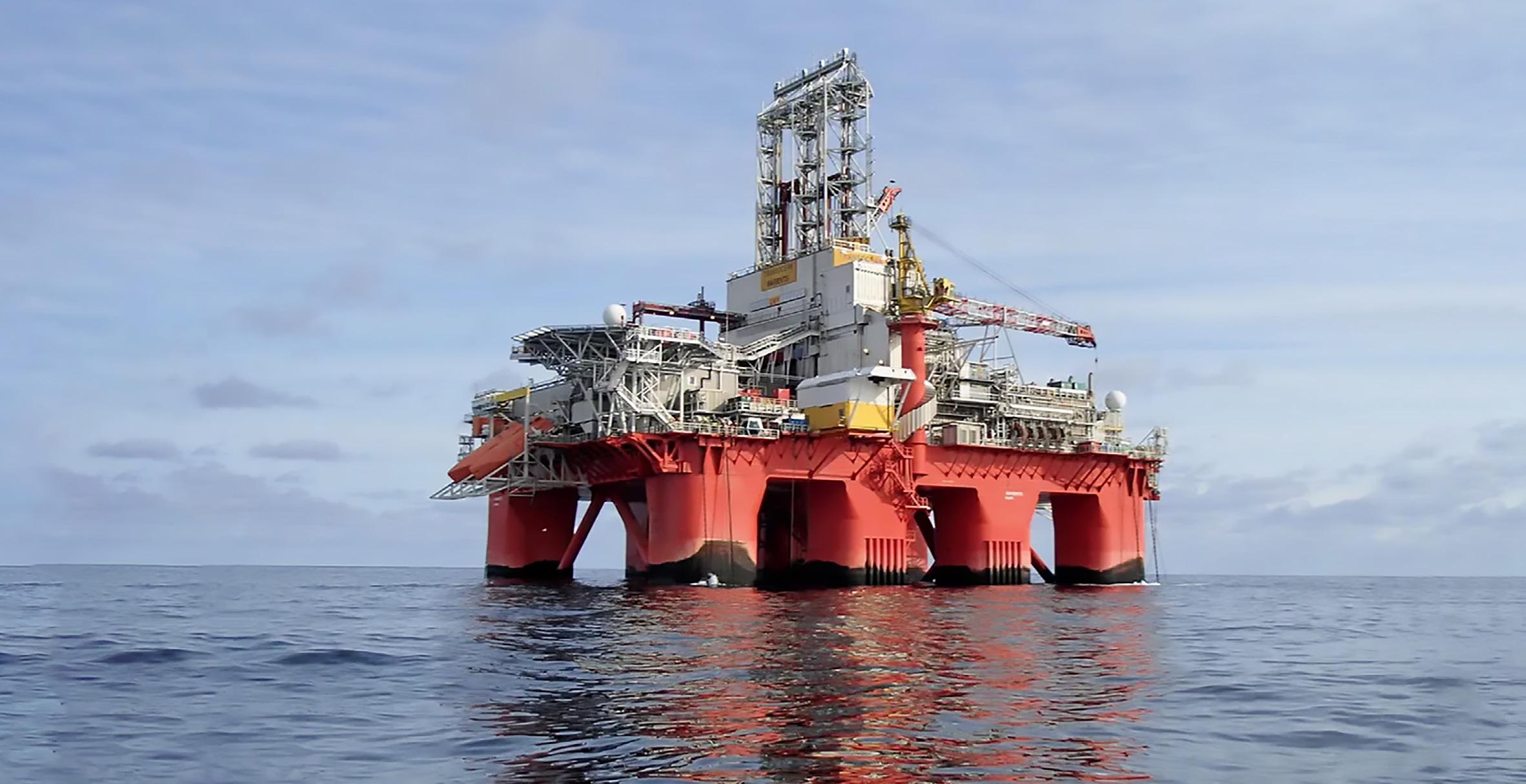
New oil and gas projects and discoveries offshore Norway, the UK’s progress toward net zero, and a number of clean energy projects across Britain and Europe were the highlights in the European energy sector in the past month.
OKEA ASA and its partners announced the final investment decision (FID) for the Brasse development of the field in the northern North Sea, 13 kilometres south of the Brage field. Brasse is estimated to contain 24 million barrels of oil equivalent gross in recoverable reserves and will be developed as a tie-back to the Brage field, OKEA said.
The development plan for Brasse consists of a two-well subsea tie-back to the Brage platform, which will serve as the host facility for production, processing, and export. Use of standard solutions, well-proven technology, and close cooperation with strategic partners will ensure an efficient and cost-effective development, according to the company.
OKEA has also won the consent of the Norwegian Ocean Industry Authority, Havtil, to extend the lifetime of the Draugen field and facility in the southern part of the Norwegian Sea, which began production in 1993. The consent for Draugen facilities was previously valid until 9 March 2024, but this has now been extended to 31 December 2040.
Harbour Energy and its partners have confirmed a gas discovery in well 15/9-25 in the North Sea, the Norwegian Offshore Directorate said. 15/925 is the first well in production licence 1138, which was awarded in Awards in Pre-defined Areas (APA) in 2021.
The Norwegian Ocean Industry Authority (Havtil) has given Equinor consent to use Kristin Sør phase 1, a field in the Norwegian Sea, a few kilometres southwest of the
Åsgard field. The consent applies to the use of seabed installations, pipelines, control cables and associated modifications on the Kristin facility. The field is developed with four subsea templates and 12 production wells tied-back to a semi-submersible facility for processing. Production started in 2005.
DNO ASA announced completion of an appraisal well and sidetrack that further delineated the 2023 Heisenberg oil and gas discovery in the Norwegian part of the North Sea. Heisenberg, a new shallow play in the northern part of the Norwegian North Sea, is now estimated to hold recoverable volumes in the range of 24 to 56 million barrels of oil equivalent, while oil-bearing sands were encountered in a deeper secondary target, Hummer.
Equinor, on behalf of the partners, is exercising two options to extend contracts with Archer, KCA Deutag Drilling Norway, and Odfjell Operations for a total of four years.
The Norwegian major is also reducing emissions at the Sleipner field centre, the Gudrun platform, and other associated fields as they are now partly operating on power from shore. This will reduce annual emissions from the Norwegian continental shelf (NCS) by 160,000 tonnes of CO2. All installations on the Utsira High are now receiving power from shore, saving emissions amounting to about 1.2 million tonnes of CO₂ per year, Equinor says.
TotalEnergies announced at the end of March the restart of production from the Tyra hub in the Danish North Sea, after the completion of a major redevelopment project of the hub.


www.ogv.energy I May 2024
Photo: TRANSOCEAN
Low-Carbon Energy
The UK’s North Sea Transition Authority (NSTA) has published two sets of guidance which will help the developing carbon storage industry prepare for first injection. The new guidance will help industry manage storage sites and boost job creation, the authority said.
Wind power generated a record share, 28.7 percent, of UK electricity in 2023, while the share of generation from fossil fuels fell to a record low, a share of 36.3 percent, the latest government data showed. However, power generation from gas remained the principal form of UK generation at 34.3 percent. Low carbon generation with renewables and nuclear combined increased to a record high share of 61.5 percent.
Scotland’s 2030 climate goals are no longer credible, due to continued delays to the updated climate change plan and further slippage in promised climate policies, the Climate Change Committee said at the end of March. The Scottish Government is unlikely to meet its statutory 2030 goal to reduce emissions by 75 percent and there is no comprehensive strategy for Scotland to decarbonise towards Net Zero, the Committee said.
“Scotland has laudable ambitions to decarbonise, but it isn’t enough to set a target; the Government must act. There are risks in all reviewed areas, including those with significant policy powers devolved to the Scottish Government,” said Professor Piers Forster, interim Chair of the Climate Change Committee.
The Electricity System Operator (ESO) has published a report, ‘Beyond 2030’, which proposes a £58 billion investment in the electricity grid to meet the growing and decarbonising demand for electricity in Great Britain by 2035.
The plan would connect additional 21 gigawatts (GW) of offshore wind development off the coast of Scotland to the grid in an efficient and coordinated way, and this investment will allow Britain to exploit the economic potential as a leader in offshore wind by moving the power to where it is needed, ESO said.
In response to the proposed investment, RenewableUK’s Director of Future Electricity Systems Barnaby Wharton said,
“This investment in new networks is absolutely vital, to slash bills, make our economy more competitive and boost Britain’s energy security.”
Two UK ports, Port Talbot in Wales and the Port of Cromarty Firth in Scotland, are advancing for further consideration by the Department for Energy Security and Net Zero for funding to support floating wind projects.
Another port, Port of Aberdeen, is a step closer to becoming a strategic hub for floating offshore wind, with its proposed South Harbour upgrade project progressing to Stage 2 ‘priority’ status in the Scottish Offshore Wind Energy Council’s (SOWEC) Strategic Investment Model (SIM).
In company news, the Thistle Wind Partners (TWP) consortium involving DEME, Qair, and Aspiravi, has awarded Ramboll the contract for pre-FEED of the foundations for its 1-GW Bowdun offshore wind project.
TWP started developing its projects in January 2022 after winning seabed lease options from Crown Estate Scotland for the 1-GW Ayre Offshore Wind Farm off the coast of Orkney and the 1-GW Bowdun Offshore Wind Farm off the Aberdeenshire coast.
The Secretary of State for Energy Security and Net Zero has granted development consent to the Hynet Carbon Dioxide Pipeline application. The consent will allow the construction, operation, and maintenance of infrastructure to transport captured CO2 as part of the HyNet CCS cluster, where Italy’s Eni is the transportation and storage operator.
Hitachi Energy has won an order from SP Energy Networks to design and deliver a first-of-its-kind power quality solution to balance the grid and boost the flow of renewable energy across the UK. The solution will enable the addition of more renewables into the grid of SP Energy Networks, the electricity network operator for Central & Southern Scotland and Merseyside, Cheshire, North & Mid-Wales, and North Shropshire.
TagEnergy and Harmony Energy have powered their 49MW/98MWh Jamesfield battery energy storage system (BESS) near Abernethy, Scotland, after completing the standalone project.
Liverpool City Region’s Mayor Steve Rotheram has unveiled advanced proposals to build the world’s largest tidal scheme on the banks of the River Mersey. The scheme would need government backing to complete the development stage.
Worley has been awarded services contracts by Shell supporting the delivery of Europe’s largest renewable hydrogen project located in the Port of Rotterdam in the Netherlands.
bp pulse, bp’s electric vehicle charging brand, has acquired the freehold of one of the largest truck stops in Europe, Ashford International Truckstop in Kent, as part of its drive to support heavy goods vehicles (HGV) fleets as they
electrify. bp pulse plans to transform the site with mega-watt EV chargers for HGVs.
Net Zero Teesside Power (NZT Power) and the Northern Endurance Partnership (NEP) have selected contractors for engineering, procurement, and construction contracts with a combined value of around £4 billion. The selection of nine leading specialist contractors across eight contract packages is a major milestone for the Teesside-based projects, which would contribute to the UK’s journey towards net zero emissions by 2050, the joint venture partners bp and Equinor said in March.
Top offshore wind developer Ørsted and Dillinger, the largest heavy steel plate producer in Europe, have strengthened their partnership by agreeing that Ørsted will be offered the first production of lower-emission steel for offshore wind foundations from Dillinger, subject to availability and commercial terms and conditions. Taking the current technology outlook into account, the reduction of the process-related carbon emissions from production is expected to be around 55-60 percent compared to conventional heavy plate steel production, Ørsted said.
The generation arm of UK’s Octopus Energy is investing in German renewables developer Lintas Green Energy by Octopus’ Sky fund taking a 50-percent stake of the Oldenburg-based green energy developer to accelerate their growth across the country. The investment will help build new wind and solar farms, targeting 1 GW by 2030 – enough clean energy to power 370,000 German homes.
TotalEnergies said in early April it would develop a second battery storage project in Belgium, at its depot in Feluy, following a first such project at the Antwerp refinery. Start-up of the Feluy battery storage project is expected at the end of 2025.
“We are pleased to announce this new storage project in Feluy, just a year after we began our Antwerp project, which should be operational by the end of the year,” said Olivier Jouny, Senior Vice President, Integrated Power at TotalEnergies.
“These projects are fully in line with our integrated development strategy for electricity, not just in Belgium, but globally.”
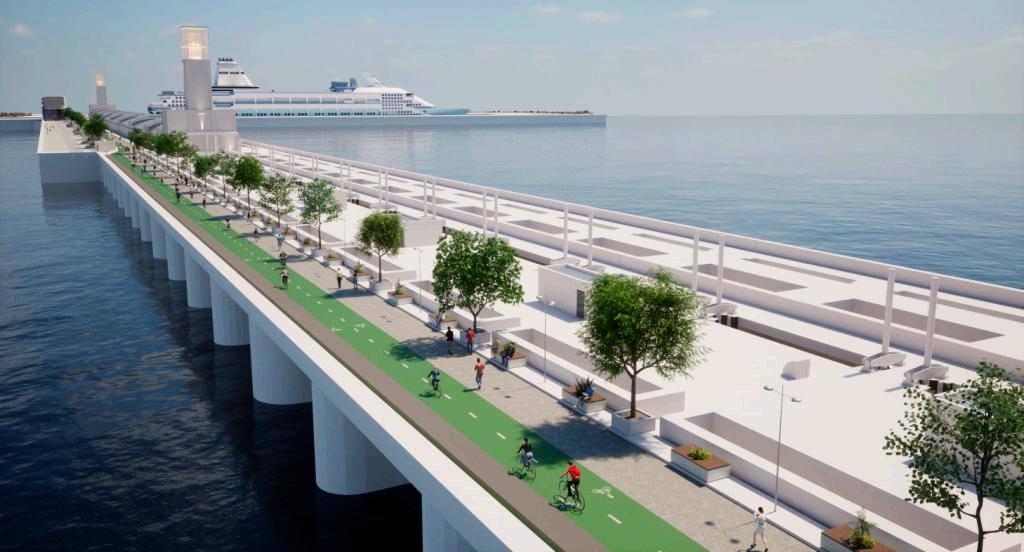

13 EUROPEAN ENERGY REVIEW EUROPE NEWS SPONSORED BY
Artists impression of a tidal barrage across the River Mersey.
Energy Review USA
By Tsvetana Paraskova

The company outlook about the future of the US oil and gas sector has improved despite little change in industry activity in the first quarter of the year, while breakeven prices have increased from a year ago, the latest Dallas Fed Energy Survey showed.
of ready-to-be-turned-in-line wells once prices rebound.
The industry has also made progress in reducing emissions while industry organisations are calling on Congress to overturn some proposed new rules the Biden Administration plans for the transportation and energy production sectors.
US Breakeven Prices Rise
The latest Dallas Fed Energy Survey showed at the end of March little change in oil and gas activity in the Eleventh District, which includes Texas, northern Louisiana, and southern New Mexico.
The business activity index, the survey’s broadest measure of conditions energy firms in the Eleventh District face, was 2.0 in the first quarter, suggesting little to no growth during the quarter, and was essentially unchanged from the previous quarter, according to oil and gas executives responding to the Dallas Fed Energy Survey.
Oil and gas production decreased, especially sharply for natural gas, while costs increased at a slightly faster pace for both oilfield services and E&P firms, the survey found.
The company outlook index rebounded in the first quarter, jumping by 24 points to 12.0. Yet, it is still below the series average. The overall outlook uncertainty index dropped by 22 points to 24.1, suggesting that while uncertainty
On average, respondents expect a West Texas Intermediate (WTI) oil price of $80 per barrel at year-end 2024, with responses ranging from $70 to $120 per barrel. When asked about longer-term expectations, respondents on average expect a WTI oil price of $83 per barrel two years from now and $90 per barrel five years from now, the survey showed.
Survey participants expect a Henry Hub natural gas price of $2.59 per million British thermal units (MMBtu) at year-end, $3.18/ MMBtu two years from now, and $3.94/ MMBtu five years from now. WTI spot prices averaged $82.52 a barrel and Henry Hub spot prices averaged $1.44/MMBtu during the survey collection period 13–21 March.
Executives stated in the latest survey that the average breakeven price for existing wells across the US is now about $39 per barrel, up from $37 a barrel last year. Across regions, the average price necessary to cover operating expenses ranges from $31 to $45 per barrel. Almost all respondents can cover operating expenses for existing wells at current prices, the survey found. The Delaware basin of the Permian has the lowest average breakeven at $31 per barrel, while the average breakeven for non-shale US oil production is $45 a barrel.
For the entire sample, companies need $64 per barrel on average to profitably drill a new well, higher than the $62-per-barrel price when this question was asked last year.



www.ogv.energy I May 2024 Your Global Procurement Partner - Procurement Services - Spend Analysis - Cost + - Vendor Consolidation - Specification Sourcing - E-procurement ESWL Ltd, 4 Prospect Place, Westhill, Aberdeenshire, AB32 6SY ESWL Americas Inc, 1010 Goodnight Trail, Houston, TX 77060 sales@eswl-ltd.com | houston@eswl-ltd.com www.eswl-ltd.com SPONSORED BY
Photo: Monty Jackson Flickr
Across regions, average breakeven prices to profitably drill range from $59 to $70 per barrel. Breakeven prices in the Permian Basin average $65 per barrel, up by $4 compared to last year. Almost all firms in the survey can profitably drill a new well at current prices.
Respondents also noted that the Environmental Protection Agency’s (EPA) guidance regarding the methane charge from the Inflation Reduction Act would have a net negative impact on their firm. The mostselected response among E&P firms was “slightly negative,” chosen by 46 percent of respondents. Another 34 percent selected “significantly negative,” while 19 percent selected “neutral,” and 1 percent expect a positive impact.
Commenting on the survey, an executive at one exploration and production (E&P) firm said that “Natural gas prices remain challenged, primarily due to the overhang of storage and lack of winter demand. Crude oil markets have continued to be constructive. We have decreased capital investments in our natural gas portfolio and increased capital investments in our oil portfolio.”
“Operator performance varied, however, and we believe the next five years will prove critical for companies to address easier-toabate emissions ahead of quickly changing regulations,” said Ivana Petrich, senior associate with EIR.
“Despite a 23% drop in reported methane emissions, we calculate that many plays would still, on average, be exposed to the Inflation Reduction Act’s waste emissions charge that came into effect on Jan. 1, based on 2022 emissions.”
Industry Opposes Latest Biden Administration Rules
“This tax on American energy is a serious misstep that could jeopardize our nation’s energy advantage and weaken our energy security,”
Natural Gas Producers Cut Output and Prepare for a Price Rebound
US natural gas producers have announced production reductions this spring in response to historically low prices, due to a milder winter, which led to lower gas demand for heating and power and to above-average levels of working gas in storage.
The low prices are setting up American producers for a more difficult 2024 than they had probably expected. Gas producers are using their operational flexibility in well drilling and completion, Enverus said at the end of March. Companies are deferring production and well completions and are stocking up on wells ready to be turned in line when natural gas prices recover.
“While companies are certainly protective of cash flow, they all want to be ready to service the next wave of LNG projects coming online in 2025,” Enverus notes.
US Oil and Gas Sector Cuts Emissions
The oil and gas sector’s reported upstream and gathering emissions fell between 2020 and 2022, Enverus Intelligence Research (EIR) said in a report in March. Total emissions declined by 5 percent despite a 9-percent increase in production. This led to a 12-percent drop in emission intensity across the Lower 48.
The American Petroleum Institute (API) has joined with 19 associations representing all segments of the US oil and natural gas industry operating across the country in calling on the US Environmental Protection Agency to revise what API described as a “misguided methane fee” on American energy.
In comments submitted to the EPA on the “waste emissions charge” proposed rulemaking, the associations argued that the proposed rule creates an incoherent regulatory regime, fails to meet the statutory requirements outlined by the Inflation Reduction Act, and discourages emissions reduction efforts by the industry.
“This tax on American energy is a serious misstep that could jeopardize our nation’s energy advantage and weaken our energy security,” said API Senior Vice President of Policy, Economics and Regulatory Affairs Dustin Meyer.
“U.S. oil and natural gas is innovating throughout its operations to reduce methane emissions while meeting growing energy demand. Yet this proposal creates an incoherent, confusing regulatory regime that will only stifle technology advancements and hamper energy development,” Meyer added.
EPA issued at the end of March a final rule that sets new, more protective standards to further reduce harmful air pollutant emissions from light-duty and medium-duty vehicles starting with model year 2027.
API and the American Fuel & Petrochemical Manufacturers (AFPM) said the final rule would eliminate most new petrol cars in less than a decade.
“At a time when millions of Americans are struggling with high costs and inflation, the Biden administration has finalized a regulation that will unequivocally eliminate most new gas cars and traditional hybrids from the U.S. market in less than a decade,” API President and CEO Mike Sommers and AFPM President and CEO Chet Thompson said in a joint statement.
“This regulation will make new gas-powered vehicles unavailable or prohibitively expensive for most Americans. For them, this wildly unpopular policy is going to feel and function like a ban.”
API and AFPM noted that currently, only EVs and five plug-in hybrid models meet the 82 grams/mile threshold in EPA’s rule. No petrol, diesel, or traditional hybrids come close, they noted, and said that if Congress doesn’t overturn the rule they are prepared to challenge it in court.
According to an Ipsos poll, 75 percent of US registered voters oppose government policies that would ban new gasoline, diesel and traditional hybrid vehicles, including 80 percent of Independent voters and 56 percent of Democrats, API said.



15 USA ENERGY REVIEW
USA NEWS Sponsored by:
Photo: Getty Images
MIDDLE EAST Energy Review
By Tsvetana Paraskova
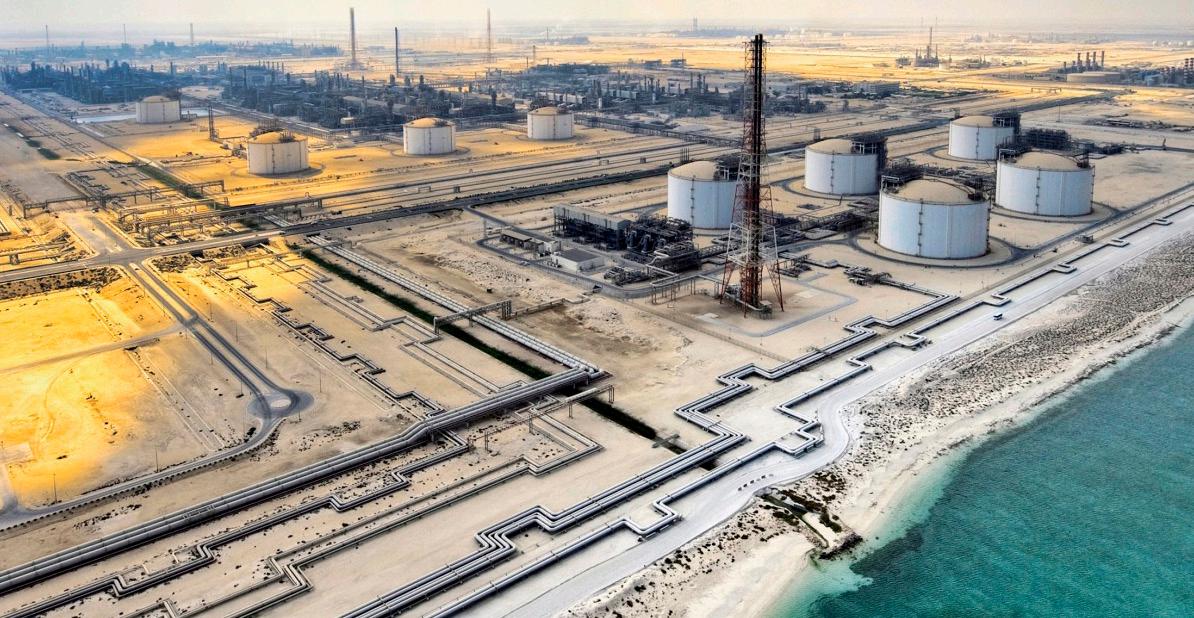
OPEC’s continued production cuts, Saudi Aramco’s view on the energy transition, and a number of gas and LNG projects and contract awards marked the past month in the Middle East’s oil and gas industry.
OPEC Remains on Course with Oil Output Cuts
The Joint Ministerial Monitoring Committee (JMMC), the OPEC+ group’s panel that monitors market developments and compliance with the cuts, met in early April and did not make any recommendation to the OPEC+ alliance about changing its production policy.
The committee expects the countries that have so far exceeded their quotas, most notably Iraq and Kazakhstan, to submit their detailed compensation plans to the OPEC Secretariat.

“The Committee welcomed the Republic of Iraq and the Republic of Kazakhstan pledge to achieve full conformity as well as compensate for overproduction. The Committee also welcomed the announcement by the Russian Federation that its voluntary adjustments in the second quarter of 2024 will be based on production instead of exports,” OPEC said in a statement after the panel’s regular meeting.
The next meeting of the JMMC is planned to be held on 1 June, when OPEC+ participants are expected to decide how to proceed with the current cuts into the second half of the year.
OPEC Says $14 Trillion Investment Needed to Meet Oil Demand by 2045
The oil industry needs cumulative oil-related investments of around $14 trillion from now until 2045, Dr. Ayed S. Al-Qahtani, Director of OPEC’s Research Division, said at the 10th Joint IEA-IEF-OPEC Workshop on the Interactions between Physical and Financial Energy Markets at the end of March.
“This massive spending will be required to meet global oil demand, which is expected to reach 116 mb/d by 2045,” Al-Qahtani added.
“This must be an industry priority if we are to maintain security of supply and avoid unwanted volatility in the years ahead.”
According to Al-Qahtani, “we must continue to do everything we can to avoid volatility, and this includes speculative positioning, which can adversely impact the global oil market.”
Saudi Arabia Warns Against Ideas to Phase Out Oil and Gas
At the CERAWeek in Houston, one of the top annual oil industry events, Saudi Aramco’s president and CEO, Amin Nasser, warned that “We should abandon the fantasy of phasing out oil and gas, and instead invest in them adequately, reflecting realistic demand assumptions.”
The current energy transition strategy ignores the message from consumers globally, who
“want energy that helps protect the planet and their pocket books, with minimal disruption to supplies and their daily lives,” the chief executive of the world’s largest oil firm told the CERAWeek audience.
The world should ramp up efforts to reduce carbon emissions, aggressively improve efficiency, and introduce lower carbon solutions, he added.
“We should phase in new energy sources and technologies when they are genuinely ready, economically competitive, and with the right infrastructure, adjusting all of the above as needed, as we go,” Nasser said, noting that the energy transition enthusiasm faces hard truths such as still low wind, solar, and EV shares compared to conventional energy sources and the huge subsidies given out to clean energy sources.
Aramco Key Investor in China
Saudi Aramco, the world’s single largest crude oil exporter, is investing in China, the top crude importer, and will continue to do so in refining, petrochemicals ventures, and venture capital to explore new strategic investment in critical materials and renewables, Aramco’s Nasser said at the China Development Forum 2024 in late March.
“While energy remains a strategic pillar of our rock-solid relationship, our vision of the future extends far beyond investing and cooperating in energy alone. Here we have noted with keen interest what Premier Li recently called the “strategic emerging industries and futureoriented industries,” he added.
“We want to be a partner of first resort in China’s economic development journey, as new opportunities clearly come into focus,” Nasser said, noting that Aramco was among the leading direct investors in China last year.
Contracts To Boost Middle East’s Oil and Gas Supply
Meanwhile, Aramco awarded in early April $7.7 billion worth of engineering, procurement and construction (EPC) contracts for a
www.ogv.energy I May 2024
Ras Laffan Industrial City © QuatarEnergy
major expansion of its Fadhili Gas Plant in the Eastern Province of Saudi Arabia. The project is expected to increase the plant’s processing capacity from 2.5 to up to 4 billion standard cubic feet per day (bscfd). The additional processing capacity is expected to contribute to the company’s strategy to raise gas production by more than 60 percent by 2030, compared to 2021 levels. The Fadhili Gas Plant expansion, which is expected to be completed by November 2027, is also expected to add an additional 2,300 metric tons per day to sulphur production.
“The award of these contracts reflects Aramco’s goal to increase supplies of natural gas, help efforts to reduce greenhouse gas emissions, and free up more crude oil for value-added refining and export,” said Wail Al Jaafari, Aramco Executive Vice President of Technical Services.
In the United Arab Emirates (UAE), ADNOC has issued a Limited Notice to Proceed (LNTP) for early engineering, procurement and construction (EPC) activities for its low-carbon liquefied natural gas (LNG) project in Al Ruwais Industrial City, Abu Dhabi. The early EPC award went to a joint venture led by Technip Energies with JGC Corporation and National Petroleum Construction Company PJSC.
The Final Investment Decision (FID) for the project is expected this year. Once completed, Ruwais LNG will consist of two 4.8 million metric tonnes per annum (mmtpa) LNG liquefaction trains with a total capacity of 9.6 mmtpa, and is set to more than double ADNOC’s LNG production capacity, from 6 mmtpa to around 15 mmtpa.
Ruwais LNG is set to be the first LNG export facility in the Middle East and North Africa region to run on clean power, making it one of the lowest-carbon intensity LNG plants in the world, ADNOC says.
ADNOC has also signed a 15-year Heads of Agreement with a subsidiary of Germany’s SEFE Securing Energy for Europe GmbH, for the delivery of 1 million metric tonnes per annum of LNG. Deliveries are expected to start in 2028, upon commencement of the facility’s commercial operations. The fuel will
primarily be sourced from ADNOC’s Ruwais LNG project.
The deal with the German firm is the second long-term LNG supply agreement from the Ruwais LNG project, following the 15-year agreement with China’s ENN Natural Gas signed in December 2023.
ADNOC announced at the end of March the start of crude oil production from its Belbazem offshore block, which is operated by Al Yasat Petroleum, a joint venture between ADNOC and China National Petroleum Corporation (CNPC).
Production capacity at the Belbazem offshore block is set to progressively ramp up to 45,000 barrels per day (bpd) of light crude and 27 million standard cubic feet per day (mmscfd) of associated gas, contributing to ADNOC’s target of reaching 5 million bpd by 2027 and enabling UAE gas self-sufficiency, ADNOC said.
Qatar’s state firm QatarEnergy has signed time-charter party (TCP) agreements with Qatar Gas Transport Company Limited (Nakilat) for the operation of 25 conventional-size LNG vessels as part of the second ship-owner tender under QatarEnergy’s LNG fleet expansion programme.
Seventeen of the 25 LNG vessels are being constructed at the Hyundai Heavy Industries (HHI) shipyards in South Korea, and the remaining eight are being constructed at Hanwha Ocean (formerly Daewoo Shipbuilding & Marine Engineering), also in South Korea.
QatarEnergy has also signed long-term agreements with four international shipowners for the operation of 19 new, ultra-modern conventional size LNG vessels, bringing the total number of ships for which it has signed TCPs to 104 vessels, said QatarEnergy’s chief executive officer Saad Sherida Al-Kaabi
“These signings form a significant milestone in QatarEnergy’s LNG fleet expansion program, as it marks the conclusion of the conventional sizes vessels portion of program, bringing the total number of ships for which we have signed TCPs to 104 vessels, a massive undertaking that is the largest shipbuilding and leasing program ever in the history of the industry,” said Al-Kaabi, who is also the Minister of State for Energy Affairs of Qatar.
“These ships will support our expanded LNG production capacity from the North Field in Qatar and Golden Pass in the U.S., while also meeting our longterm fleet replacement requirements.”
“These ships will support our expanded LNG production capacity from the North Field in Qatar and Golden Pass in the U.S., while also meeting our long-term fleet replacement requirements.”


Wellpro Group & Omega Well Intervention provide a complete Thru Tubing, Inflatable Packer & Well Intervention portfolio including operational design, project management, service, rental & sales.


17 MIDDLE EAST ENERGY REVIEW 17 Middle East Review SPONSORED BY
Image by Suphanat Khumsap via iStock

SPONSORED BY

www.eicdatastream.the-eic.com
Energy projects and business intelligence in the energy sector
The EIC delivers high-value market intelligence through its online energy project database, and via a global network of staff to provide qualified regional insight. Along with practical assistance and facilitation services, the EIC’s access to information keeps members one step ahead of the competition in a demanding global marketplace.
The EIC is the leading Trade Association providing dedicated services to help members understand, identify and pursue business opportunities globally.
It is renowned for excellence in the provision of services that unlock opportunities for its members, helping the supply chain to win business across the globe.
The EIC provides one of the most comprehensive sources of energy projects and business intelligence in the energy sector today.
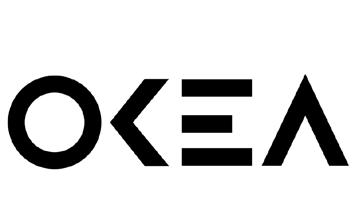




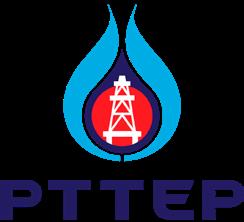

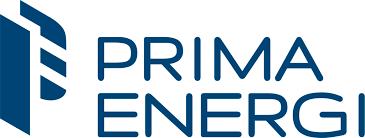

18 ENERGY PROJECTS MAP
2 8 10 11 12 5 7 1 9 World Projects Map 4 6 3 www.ogv.energy I May 2024
NORWAY
$550 million

BESTLA OIL AND GAS FIELD
A final investment decision has been reached by the operating group for the project. OKEA has awarded a contract to Aker Solutions for the project's topside scope, as well as to Subsea7 and OneSubsea for subsea requirements. Contracts for drilling rig services will be awarded in 2Q 2024

BUL HANINE OIL FIELD –REDEVELOPMENT –PHASE 2
Tender documents for EPCI Package 1 have been issued for the project. EPCI Package 1 involves a new central processing platform, living quarters, utility platform, gas injection platform, riser platform and modifications of existing structures.

KIKEH OFFSHORE
AND GAS FIELD
McDermott International has won an offshore transportation, installation and commissioning contract for the Kikeh subsea gas lift project off Malaysia, worth up to $50 million. McDermott will replace the existing gas lift riser and install new equipment to deliver gas to a subsea production system linked to the Kikeh FPSO vessel. 6

BLOCK 15/06: AGOGO FULL FIELD DEVELOPMENT
Blue Water’s Floating Productions Systems (FPS) project team will oversee the transportation of 15 Agogo topside modules for the Agogo FPSO, with the heaviest weighing 3,211 metric tonnes. The initial transportation, which is slated to commence in May 2024, will encompass both domestic and international routes from Vietnam and Indonesia to China.
7
NAMIBIA

BLOCK 2913B VENUS OIL DISCOVERY

BLOCK P – VENUS OIL FIELD
The Government of Equatorial Guinea has approved the Joint Operating Agreement (JOA) for the Venus plan of development (POD). All partners have signed the final documents of the JOA, allowing the project to advance. FEED work will now commence. Once the FEED is completed the operator anticipates taking a final investment decision.

BLOCK 29 – POLOK AND CHINWOL DISCOVERIES
BW Offshore has been awarded the contract to undertake FEED studies on the project. The project is expected to utilise a medium sized FPSO with a production capacity of up to 60,000 b/d of oil. First oil is expected in 2026.
$800 million Prima Energi 4
It has been announced that TotalEnergies are to launch the development of the Venus oil discovery during 2024. Reservoir characteristics are considered to be impressive, and the announcement follows two completed drill stem tests. 8

GATO DO MATO OIL FIELD
MODEC has been awarded the FEED contract for the FPSO on the oil field. MODEC will be responsible for the design of the hull and all related topsides facilities for the FPSO, which is projected to be moored by a SOFEC Spread Mooring system.
INDONESIA

ANDE ANDE LUMUT OIL FIELD
The operator has received approval for the revised Plan of Development. The expected production from the heavy oil field is 20,000 b/d. The project is to be developed in two stages the first of which will see the installation of a wellhead platform and the drilling seven horizontal production wells.

BLOCK B PROJECT
The final investment decision for the project was announced on the 28 March. The offshore development which will have a production capacity of 490 MMcf/d of gas is expected online by the end of 2024. A consortia comprising of McDermott and Petrovietnam Technical Services Corporation will provide the EPCI and HUC services for a central processing platform, living quarters platform, flare tower and bridges for the project.

DRAGON GAS FIELD
The developers have started preparations for pre-FEED studies associated with the Dragon development. The government of Trinidad & Tobago expects Shell to issue an FID for the Dragon field in 2025. Dragon's initial output is estimated at 5MMcm/d - which will be exported and processed in Trinidad.

KASKIDA OIL FIELD
It was announced during March that BP could reach a final investment decision around June 2024. FEED work is currently underway. Plans for Kaskida to be developed will see the deployment of a semi-submersible floating production unit with oil and gas processing capacities of 80,000 b/d and 25 MMcf/d.


19 ENERGY PROJECTS MAP WORLD PROJECTS SPONSORED BY
1
OKEA
billion QatarEnergy 2
QATAR $2
$5 billion TotalEnergies 3
MALAYSIA $1 billion PTTEP 5
OIL
ANGOLA $10 billion Azule Energy BRAZIL $3 billion Shell VIETNAM $6.8 billion PetroVietnam 12
9
10
11
EQUATORIAL GUINEA $500 million Vaalco MEXICO $2.5 billion Repsol VENEZUELA $3 billion Shell USA $10 billion BP
Innovation and Technology in the Energy Industry
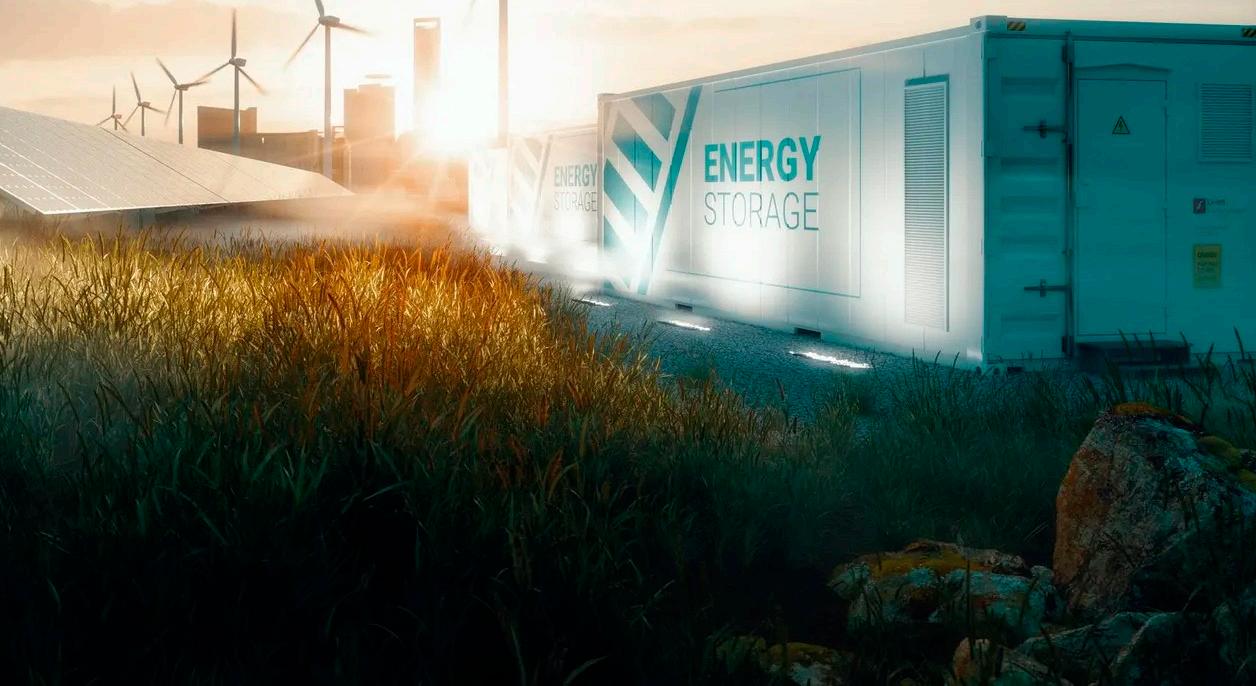 By Tsvetana Paraskova
By Tsvetana Paraskova
Energy companies are increasingly relying on technology and innovation to boost their bottom line and reduce emissions.
The oil and gas industry bets on digitalisation and innovation in exploration, drilling, and production, using the latest tech advances to ensure safe and continuous operations. The energy sector is also looking to incorporate the latest innovations to bring down emissions from operations as many firms, including the biggest European oil majors, have pledged to become net-zero energy businesses by 2050.
Innovation helps energy firms close the gap in net-zero technologies and boost domestic resource development.
North Sea – ‘A Vibrant Hotbed of Technology Innovation’
A recent report from the UK’s North Sea Transition Authority (NSTA) found that digital applications and solutions aimed at reaching net zero are driving technology growth in the North Sea, which, the authority says, “remains a vibrant hotbed of technology innovation.”
The triple targets of supporting current oil and natural gas production, reducing emissions, and accelerating the transition to net zero are driving technological innovation in the North Sea, NSTA said in its 2023 Technology Insights report earlier this year.
The authority gathered information from 55 UK North Sea operators about the technologies they have already installed and their efforts to identify solutions which could enhance operations in future.

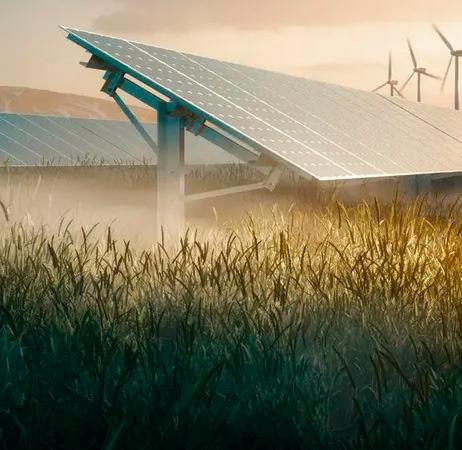

“There was strong evidence of a continuing focus on technologies for the effective and cost-efficient development of remaining hydrocarbon resources, complemented by efforts to reduce emissions,” NSTA found in the survey.
The report shows that 1,200 new technologies, including aerial drone and self-driving subsea vehicles, have been reported in the latest survey, up from the 1,080 developments recorded the previous year, and 880 in 2021.
Innovations in digital applications and Net Zero technologies have jumped in recent months. Net Zero technologies have risen from 61 in 2021 to 140 in 2023, and the number of Data and Digital technologies has grown from 190 to 381 in the same time period, the survey found.
Facilities management technologies, including deployment of aerial drones and autonomous underwater vehicles to monitor equipment remain the single largest place for
innovation, while there has been significant growth in the innovation in installations and topsides, and reservoir and well management, NSTA noted.
Other areas are seeing innovative thinking, too, with exciting new ideas implemented in seismic surveying and exploration, well drilling and construction, subsea systems, well P&A, and facilities decommissioning.
“The North Sea is full of opportunities related to hydrocarbons and net zero, but at the same time can be a difficult place to work. Operators must focus on finding solutions to many challenging problems,” said Ernie Lamza, NSTA Technology Manager.
“World-leading technologies, skills and experience boost production and support the energy transition, placing UKCS workers and companies in a great position to secure work and deliver products and services in the UK and in other producing regions around the world.”


20 www.ogv.energy I May 2024 INNOVATION & TECHNOLOGY
Notable examples of innovation in drilling and well construction include low-cost platform modular drilling rig systems, lightweight compact trees, thru-tubing isolation barrier valve, and digital well planning using AI, according to NSTA’s report.
In facilities design and inspections, operators are innovating with cost efficient pipelines and longer tie-backs, subsea gas compression and multiphase boosting, compact and effective fluid separation, and non-intrusive inspection technologies, controls and automation.
Well intervention is seeing innovative technology in wireless downhole surveillance technologies, disposable fibre-lines, retrofit DHSVs and ESPs, and water shut-off solutions.
Last but certainly not least, in the area of emission reduction, operators are deploying innovative technology for enhanced emissions monitoring, including fugitives and flare efficiency, vapour recovery systems, and electrification of platforms.

and rising materials costs, evolving policies and regulations, and the emergence of new technologies,” Deloitte partners and research leaders Amy Chronis, Kate Hardin, and Anshu Mittal wrote.
In the field of technology, artificial intelligence (AI) has the potential to be a transformative force for the industry, with applications across the value chain, ranging from initial resource exploration to refining, according to Deloitte.
Generative AI is now all the craze in many industries, not only oil and gas. This innovation, the next frontier of technology, could help the energy industry cut costs, boost efficiency of processes, create new revenue streams, and accelerate company-wide innovation, the consultancy noted.

In terms of technology uptake, NSTA’s survey found that more than half of the technologies are sourced directly from vendors and/or suppliers, but in over 30 percent of the cases, operators actively partner with selected suppliers to develop solutions in partnership, and/or form joint industry projects.
In addition, there has been a visible contribution of the Net Zero Technology Centre (NZTC) in supporting and facilitating technology innovation, in 10 percent of overall technologies surveyed, NSTA noted.
Global Uptake of Innovation
Innovation and technology go beyond the North Sea to the entire energy industry globally, which is striving to improve operating performance and deploy technologies that would help it cut emissions.
Technology adoption is one of the key trends to follow in the oil and gas industry in 2024, consultancy Deloitte said in its 2024 oil and gas industry outlook earlier this year.
“The energy landscape continues to be shaped largely by four disruptors: geopolitical factors, macroeconomic variables such as high interest rates
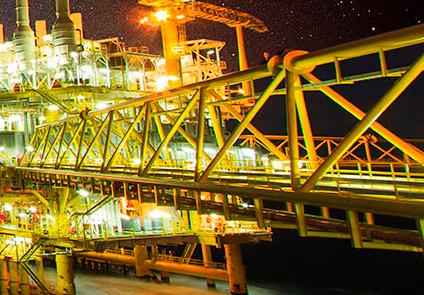
For example, predictive maintenance has a significant value for an oil and gas organisation as it could lead to immediate cost reductions. AI and other related technologies could also optimise drilling operations, make value chain management more efficient, and introduce virtual assistance to boost process efficiency, Deloitte reckons.
Generative AI could also create more value by expanding revenues thanks to optimisation of exploration and reservoirs and of refinery processes. Finally, this technology could accelerate further innovation in material design and oilfield services, Deloitte analysts say.
“Harnessing value across these dimensions using generative AI can enhance operational sustainability for O&G companies through carbon emissions monitoring, energy efficiency optimization, and waste reduction while also predicting emission intensities across their supply chain,” they wrote.
According to EY, “the adoption curve for AI is faster than for any other technology so far, so companies must act quickly.”
The oil and gas companies that look to maximise operations, proactively manage emissions, and embrace new energies will be positioned to thrive in the coming decades, say Patrick Jelinek, EY Americas Oil and Gas Leader, US West Energy & Resources Market Segment Leader, and David Kirsch, Managing Director, Energy, Ernst & Young LLP.
AI in the oil and gas industry is expected to be valued at $3.5 billion in 2024, with the market set to reach $13 billion by 2034, Future Market Insights said in a report in February.
Between 2019 and 2023, the AI market in the oil and gas sector jumped by 17 percent each year, and is expected to grow at a 14.1-percent rate every year over the next ten years, according to Future Market Insights.
The need to optimise production and cut costs, safety and environmental impact reduction, and the exponential growth in data from sensors and other data-gathering technologies will be key growth drivers of AI adoption in the oil and gas industry, FMI said.
“The sophistication of AI technology and its potential to deliver increased assets itself is driving its adoption in the oil and gas industry,” says Nikhil Kaitwade, Associate Vice President at Future Market Insights, Inc.
“As AI becomes more affordable and reliable for several industries, they can address increasingly complex problems and deliver more accurate predictions and recommendations even in the oil and gas sector.”


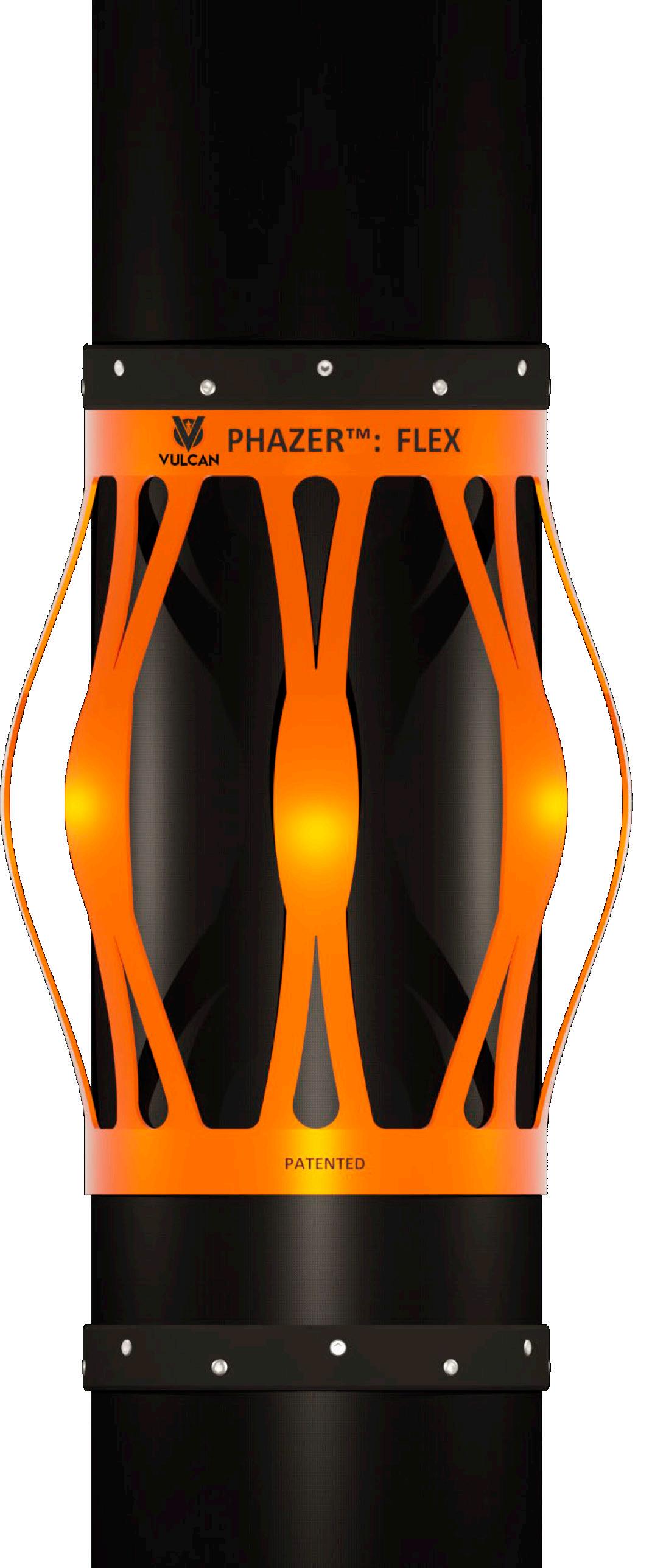
UK and international growth for completions market experts
An international leader at the forefront of next generation creative solutions for the oil and gas completions market has announced significant expansion at home and abroad.
Vulcan Completion Products’ (VCP) has doubled the size of its team in each of the last three years, from seven in 2022 to 24 and rising in 2024. From the company’s global headquarters at Westhill, Aberdeenshire the team boasts more than 200 years of combined experience into delivering the best design, manufacture, and application of bespoke, innovative, and ground-breaking solutions to a growing customer base all over the world.
Having built up a global network of carefully selected agents along with Vulcan Completion Products’ own regional offices, the company sells directly to IOCs, major players and headline service companies. From centralisation, reamer and guide shoes to float equipment, cement plugs, collars and cable protectors Vulcan Completion Products has an unmatched record of success, with the prime directive firmly focused on being a quality service provider which consistently exceeds client expectations.
Growing global footprint creates Malaysia hub
As the global footprint continues to expand, the already impressive list of regional offices in the UK, US, Dubai, Baku, Saudi Arabia and Jakarta has recently grown to add Malaysia where a new regional office to service the APAC area opened in March. The move is seen as a natural next step and allows the team to channel vast career-spanning experience of this market into creating a hub which will further extend its reach into Australia and Asia. Under the leadership of APAC Regional Manager Alex MacGregor, the five-strong team managed from Kuala Lumpur is already making significant gains by fostering pre-existing relationships and deepening the company’s roots in the area.
R&D investment redoubles commitment to UK roots
Meanwhile back in the UK, significant domestic investment has led to the creation of a new research and development hub at Vulcan Completion Products’ global headquarters at Westhill, Aberdeenshire, effectively doubling the company’s footprint at its existing premises and redoubling its commitment to the North East of Scotland. The move will provide a springboard in further accelerating Vulcan Completion Products’ already enviable track record for innovation, empowering the growing team to continue leading from the front and bring new and exciting products to the market to foster future sustainability and prosperity in all the company’s chosen markets. In this part of the business alone, three new members of staff have been brought on board to bolster efforts to ensure the pace of development

INNOVATION & TECHNOLOGY
22
57 granted patents worldwide
Ongoing global investment in intellectual property has accrued some 57 granted patents covering key markets including the USA, UK, Europe, China, India, the Middle East and Eurasia. These mark Vulcan Completion Products’ innovative products out as truly unique and ensure they stand out from the crowd in offering trailblazing solutions which sit in a class of their own.
Stars of the company’s comprehensive suite of products, and the subject of 30 patents alone, are the industry hailed, boundary pushing Phazer™ Flex and Phazer™: Flex TT (Tight Tolerance). These under-reamed centralizers reduce drag/ running forces and minimise ECDs, whilst providing positive stand-off and the best possible conditions for zonal isolation.
Phazer™ Flex has been engineered to fulfil the required extreme specifications for under-reamed applications whilst Phazer™: Flex TT tackles annular clearances of less than 0.25” (6mm) in ultra-extreme cases. All testing is performed to surpass API 10D (7th Edition) and meet all the rigorous demands of clients under-reamed wellbores.
North Sea sector success for Phazer™ Flex
In one recent success for Vulcan Completion Products, a major operator in the North Sea sector had been experiencing difficulties sourcing a competent under reamed centralizer to allow them to case and effectively cement their 7 ¾” liner which was required to pass a 9 5/8” casing to surface (ID 8.535”) and centralize in a 10 ¼” under-reamed open hole section. Previously the operator had seen a total loss of hookload/string weight in the 9 5/8” casing using a competitor’s under-reamed centralizer. The customer opted to trial Vulcan Completion Products’ Phazer™ Flex in a “fishhook” shaped profile with 9 5/8” casing set at 6,300 ft and an open hole section of around 4,500 ft building from 45° to just short of horizontal for the lower 3,000ft. Simulation software predicted RIH hookloads/drag and downhole effective stand-off. A spacing plan of three per two joints for the lower 600 ft followed by one per joint for the next 1,450ft was agreed with stand-off in the 75-85% region over the critical isolation zone. The predicted RIH drag analysis showed positive hookload and confidence the liner RIH was achievable which it accomplished, with excellent cementation throughout.
By supplying consistent, as specified products backed up by sound data, Vulcan Completion Products was once again able to achieve successful outcomes which exceeded client expectations.
Commenting on recent company growth, Ian Kirk of Vulcan Completion Products said: “By creating centres of knowledge simultaneously in the UK and in key overseas locations we can not only grow our presence globally but also strengthen our relationships with current and prospective clients by being physically closer to them.
“Our entire business is built on the importance of customer relationships and the team Vulcan now have on board are probably the most knowledgeable in the field today. By listening to their needs, and those of the wider industry, we can place them at the heart of our ethos to innovate and evolve our products in step with the requirements of those we serve.
“Adding more people in more locations ensures that allimportant reach and investing in our global headquarters in the North East of Scotland consolidates the nucleus from which we will realise our future growth aspirations.”




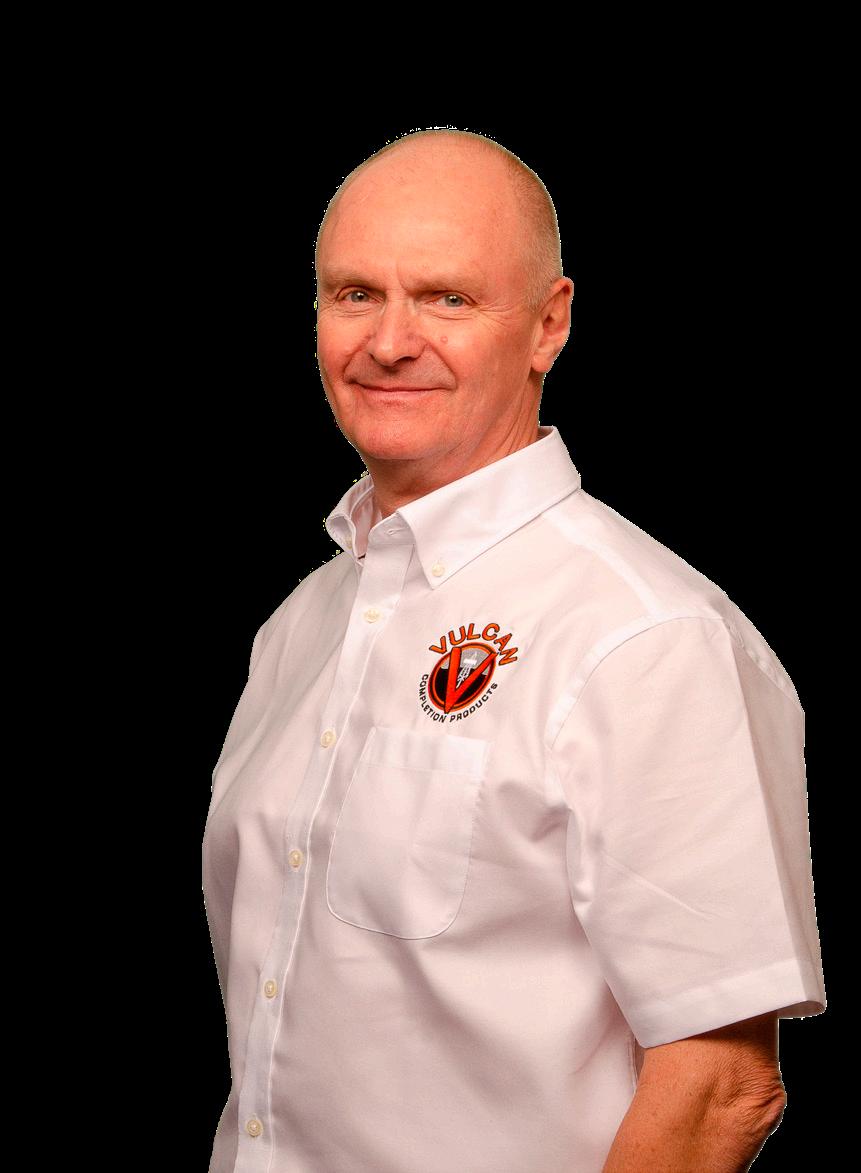
23 INNOVATION & TECHNOLOGY
To find out more about Vulcan Completion Products, visit www.vulcan-cp.com email Sales@Vulcan-CP.com or call +44 (0) 1224 446710.
Susan Goonting (Admin Manager) and Khalid Saufee (Business Development Manager) at VCP’s office in Malaysia
Pictured right: Ian Kirk

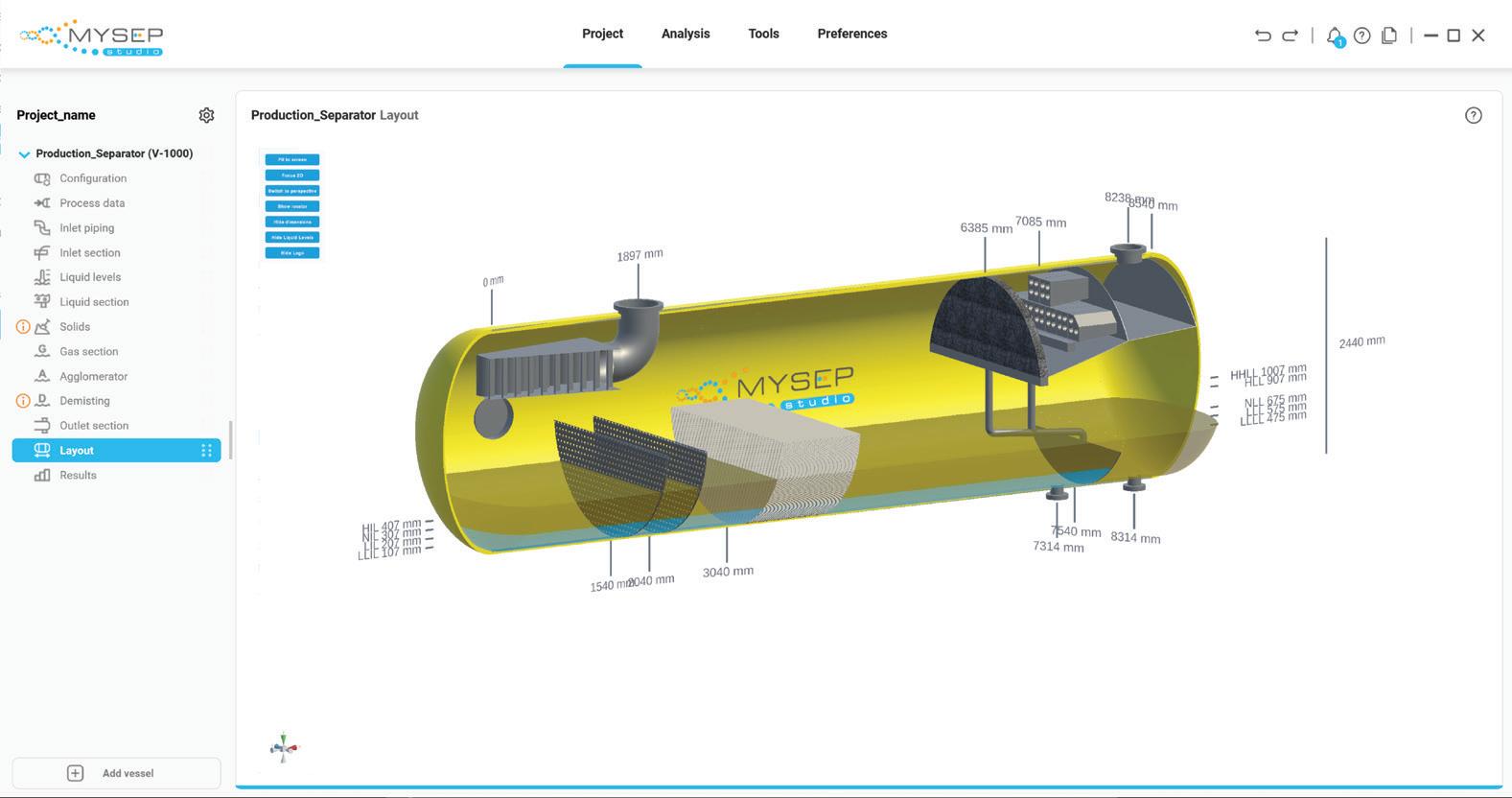
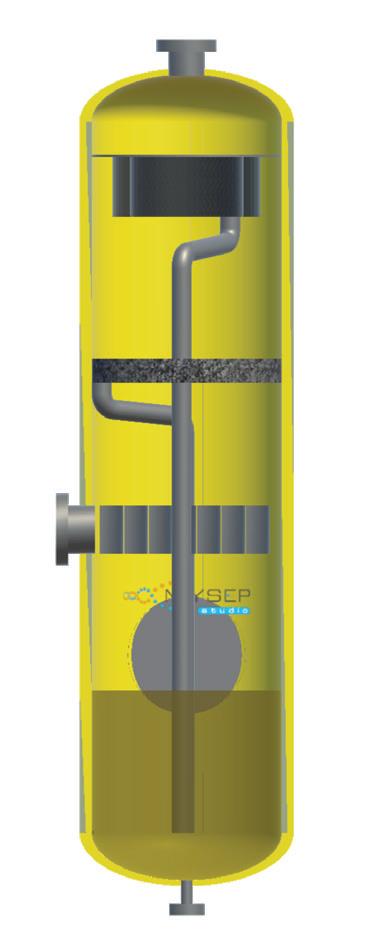





ROTECH SUBSEA SIGNS OFF BUSY YEAR IN OIL & GAS MARKET WITH NEW CFE JET TRENCHING TECH IN HIGH DEMAND

Rotech
Subsea, the leading provider of subsea jet trenching and controlled flow excavation (CFE) services to the energy industry, may have captured the headlines recently for being the global leader in offshore renewables pre-commissioning, commissioning and IRM but that is only half the story.
The Aberdeen-based technology-driven contractor known for its cutting-edge proprietary range of CFE, Jetting and Hybrid Jetting tools built its reputation in oil and gas - and continues to service the sector.
Taking the subsea excavation sector by storm in the 1990s, focused on oil & gas, Rotech Subsea emerged from a noncompete period in 2015 (following the sale of its first-generation technology) with a new generation of excavators with greater power, cutting capability, and controllability, opening up new opportunities in the renewables cable trenching sector. It has experienced exponential growth in that market ever since, and the technological advances that have driven that success have also proven to be in high demand in the oil and gas IRM and

Decommissioning market. Indeed, Rotech has just signed off on another busy year in the oil and gas sector, with the outlook for 2024 looking rosy too.
With Rotech Subsea’s R&D team constantly evolving and expanding its suite of sectorleading non-contact CFE, Suspended Jet and Hybrid Jet Trenching tools, the company provides a range of efficient and cost effective excavation services to the oil and gas market, including pipeline deburial, repair, access, cutting and removal. No stranger to adapting to an evolving energy landscape, the team continues to develop new tools and applications specifically for the oil and gas market - including the Twin RSG for retrieval of decommissioned pipelines and umbilicals, and the 10” Suction Dredger - as well as
adapting its suite of tools which deliver the narrower, deeper trenches to be cut in harder, deeper soils demanded by the offshore wind sector - for use in oil & gas decommissioning or maritime dredging.
In the last 18 months, Rotech has mobilised its project teams and equipment far and wide for oil & gas projects, including to Turkey, Trinidad and the North Sea, delivering a range of commissioning, IRM and decommissioning work scopes.
In December 2022, Rotech wrapped up an umbilical post-trenching project for a global installation contractor in Turkey, using its TRS1-LD Suspended Jet Trencher, complemented by the 350 kPa capable RS3. January 2023 saw Rotech in the North Sea
www.ogv.energy I May 2024 INNOVATION & TECHNOLOGY
26



delivering pipeline deburial works for a major subsea solutions provider with its TRS1 tool.
In April 2023, Rotech was active in the North Sea again, completing two major IRM scopes - an umbilical trenching scope with its TRS1 and rock dump removal and re-profiling with its TRS2 - for a leading international dredging and maritime services provider. The Aberdeen-based contractor delivered multiple other oil and gas pipeline deburial scopes in the region as the year progressed.
“Renewables has been a huge growth area for us in recent years, but providing commissioning, IRM and decommissioning
services to the oil & gas market is a vital part of our business,” says Director of Subsea, Steve Cochrane. “Our first-generation equipment was purpose built for the oil & gas sector but our new, more precise and more powerful non-contact tools are much in demand in both sectors, globally, and we have equipment strategically placed in the USA and Asia to service those markets.
“2023 was a really busy one for us in oil & gas in the North Sea and beyond, and with 2024 shaping up to be another great year we look forward to working with long-term partners, helping deliver their key commissioning, IRM and end-of-life projects.”



27
For more information visit: www.rotech.co.uk
How will generative AI change the energy industry?
 | by DR. THOMAS
BARTHOLOMEW GRANT Data Scientist, Cegal
| by DR. THOMAS
BARTHOLOMEW GRANT Data Scientist, Cegal
Artificial intelligence (AI) aims to replicate human abilities in communication, vision, and reasoning. Generative AI is a type of artificial intelligence that can create new and original content, such as images, music, or text using these abilities. With the pace of innovation in Generative AI accelerating, services such as ChatGPT and Midjourney have transformed how we view and use AI with the potential for disrupting every industry in ways that go beyond content creation. How will the new capabilities of AI powered tools change the energy industry and how can we make the best use of this technology?
| Large Language Models
In their simplest forms, language models aim to predict the next word, or missing word, within a sequence of other words or “tokens”. We can view language models, at a basic level, as ‘language calculators’ that solve linguistic problems. Over the last year, significant breakthroughs have been made in the field of natural language processing, where models have become bigger, faster, and more powerful. These enormous models are termed Large Language Models (LLMs) and have astonishing capabilities in writing human level text and can solve complex logical reasoning tasks.
LLMs are built using transformers, a neural network architecture that allows the model to consider large passages of text and understand more complex linguistic patterns, such as the importance of, and relationships between, words in a sentence. Transformers can differentiate and correctly weigh different parts of the input sequence of words, allowing them to adapt to different tasks.
For example, we can use one single model to summarize text, extract key information, translate into different languages, or even solve novel tasks. Gone are the days where we need specialized models for each use case.
| Working with company data
Most companies struggle to make use of their unstructured text data, which can be found in drill reports, financial reports, employee handbooks, or legal documentation, for example. Currently, the dominant framework for working with corporate text data is retrieval augmented generation (RAG). In a RAG system, chunks of text are retrieved using a search algorithm to match the user query and the LLM uses this information to generate a source informed response. This avoids common pitfalls such as the model making up information (hallucinations) or not being able to answer the query (i.e., the data is outside of the model’s training data). RAG architectures are relatively simple to implement and allow users to trace answers back to the original source information. Additionally, administrators can control levels of security over the returned data, if the content contains private or sensitive information.
| Copilots and agents
One way in which AI is already making an impact, is through copilots. Copilots are interfaces that use LLMs or other AI models to support users in various tasks or decision-making processes. Embedding copilots inside existing applications is a low threshold for AI to transform users daily work tasks. Many domain specific applications will likely soon be copilotenabled. Subsurface professionals, for example, will have AI-assistants that will help them work with their data, conduct analysis and interpretations, or navigate help and documentation to make better use of the application’s features.
cegal.com
cegal.com
by Dr. Thomas Bartholomew Grant | Data Scientist, Cegal
Agents act as a self-governing mechanism for a LLM to plan and decide on a sequence of actions to solve a multistep user defined task. The agents can “think” using the LLMs abilities to write detailed plans with step-by-step sequence of actions from user input, and they can “do” by having access to tools, such as search engines, external APIs, databases, or other AI models. For example, an agent would be able to answer a question about a topic that occurred after the date the model was trained, i.e. on information not included in the training data, by using a web search API. The difference is that a chat model would tell you how to open a LAS file and interpret the header information, whereas an agent would be able to complete that task on your behalf.
| Is our data ready for AI?
In many situations, the weakest link in the performance of AI models is the underlying data quality, with the common adage that garbage in equals garbage out. This is still very much the case, especially if we consider the AI tools as the interface for which users interact with their data. However, we can also see AI having a central role in data cleaning and processing before presentation to the user. Consider a set of unstructured text data, such as well reports. A LLM can be used to classify the text into different categories (text or tables), find anomalies or inconsistencies, extract named entities (e.g. well names), or summarize the data. We should therefore be asking questions about how data is organized, where and how it can be accessed, and what the privacy and security concerns are. In other words, how can we get the right data, and the best quality data, available to AI tools in order to get the best user experience?
| Ethical, safe, and effective use
AI powered tools should be viewed as assistants rather than decision makers. Whilst copilots and agents are extremely powerful, they are still prone to errors. Autonomous AI should have advisory roles and be used in low-risk scenarios, whereas actions that lead to real world consequences should be monitored by energy professionals who are accustomed to the environmental and financial risks associated with the industry. Through more efficient or improved information retrieval, AI could provide decision makers with more time to make their decisions and enhance data discovery to give them better data on which to base their interpretations.
Open-source frameworks are facilitating rapid cycling of new research directly into the hands of developers and offer building blocks for constructing bespoke workflow driven tools.
Cloud providers have also been quick to provide similar services. However, balancing the demand to deploy and make use of AI tools with a constantly shifting technology landscape can easily lead to technical debt. Being agile with projects to quickly provide measurable value and working with trusted vendors will be the key to success. It is also vital to keep development user driven, so that AI tools are relevant to user’s needs and that user expectations are well managed. There are many tasks that AI is highly capable of delivering, but it is also surprisingly deficient at others.
Authorities are already working to regulate AI. Being aware of norms, rules, and regulations surrounding AI will help make sure that enterprise use of AI systems is ethical, safe, and effective.
| How AI will change the energy industry
Firstly, AI will change how we interact with our data. How we search, transform, and consume data from different data sources will become easier, more efficient, and of better quality. Secondly, our interactions with data will be enabled through powerful model-based agents, which will act as highly useful assistants for performing a wide range of tasks. This will enable subsurface professionals, and other specialists within the Energy industry, to invest more quality time in decisionmaking and data analysis.
Over the next few years, we can expect: advances in agents’ planning capabilities, learning from user actions, and agents will be able to simulate challenging tasks with complex decision spaces. The optimization of small language models, groups of models, and novel deployment architectures will soon start to compete with larger proprietary models. Domain specific models in vision and language have already been developed for fields such as finance and medicine, and similar subsurface domain models are now starting to appear.
As a result of the fragmented software market in the energy industry, it is easy to see how we could be flooded with different copilots for each application or service. There are therefore clear arguments for AI-systems that can traverse data sources and applications, streamlining workflows that use multiple sources of data or application functionality. In addition, AI-based operating systems, and how they can be used to enrich user experiences, are also an area of active research.
cegal.com
cegal.com


Transforming LIM Data Into Intelligence with PlatformVi
PlatformVi, coming soon to Viper Innovations in 2024, is a bespoke data visualisation and analytics application which brings together system details and electrical integrity data into one easy-to-access platform.
As experts in asset management, Viper designed PlatformVi to help customers maximise the operational life of their subsea controls and electrical distribution equipment. The technology draws on the value derived from data to assist operators with proactive maintenance and enhanced safety by predicting and indicating potential or developing issues, improving operational efficiency, and equipment service life.
The value of data for insight and decision-making
Improved safety, productivity and sustainability are just some of the benefits that insights from electrical data can deliver to offshore operators. An effective line insulation monitoring (LIM) solution, for example, shows patterns in insulation resistance (IR) that, when correctly interpreted, enable early fault detection and proactive maintenance that extend asset life.
The value of ‘Data as a Service’ is to take the data and filter it so it becomes valuable information to help with decision-making. IR monitored by a LIM is constantly changing and has many environmental variables. This produces a lot of data, and what it all means is not intuitively obvious when the operator wants to know, for example, when to replace the umbilical. So, the next step after monitoring and gathering data is to draw correlations.
All this raw data is then organised, tagged and analysed, increasingly using machine learning to provide insights. This is where ‘Insight as a Service’ could be coined – turning the data into something meaningful that has a tangible outcome which improves safety and quality, saves money or stops something happening that could lose money.
Using machine learning and AI to improve IR analysis
Viper’s new data-driven asset management tool, PlatformVi, has a large and unique set of domain-specific cable monitoring data. This offers huge potential for the insight element of DaaS. Viper’s in-house experts apply usercentred design on an ongoing basis to identify valuable insights. Having the benefit of timeseries LIM data means patterns in the data can be correlated to real events. Crucially, using the right monitoring technology, the pattern associated with an event can be identified before the event even happens.
As data grows and technologies improve, machine learning can unlock further insight — it can ‘see’ patterns and trends that humans can’t. When humans and AI work together, properly collected historical data can be used to reconstruct events and for failure analysis, improving fault diagnosis.
In time, the condition monitoring of subsea electrical systems will be so in-depth that operators will be able to predict events like catastrophic falls in IR and take preventative action. The future of PlatformVi boasts no unforeseen failures due to IR issues and, therefore, no risk of loss of production.
To find out more about this exciting new technology, visit viperinnovations.com/ new-tech or contact us on enquiries@ viperinnovations.com
V-LIFE technology supporting operators for over a decade
Designed to recover the electrical integrity of failing subsea circuits.
V-LIFE is the only preventative and active ‘healing’ tool for low insulation resistance caused by water ingress.
Our patented technology has been designed to recover the electrical integrity of failing subsea circuits in the oil and gas sector. The only solution other than costly subsea repair or total umbilical replacement. Helping secure the critical supply of gas from subsea fields.


For more information, visit www.viperinnovations.com/v-life
or speak to one of our experts on: enquiries@viperinnovations.com

30 INNOVATION & TECHNOLOGY
Arnlea: Celebrating 30 Years of Success and Three New Appointments Years!
Arnlea, a leading provider of innovative inspection and maintenance software solutions, is thrilled to celebrate its 30th anniversary of delivering excellence to the energy industry in Aberdeen, Scotland and beyond.
In conjunction with this milestone, Arnlea is proud to announce the appointment of three key members to their team: Claire Murray as Head of Business Development, Jen Hughes as Marketing Manager and Kailee Hoffman as SaaS Delivery Manager.
Since its inception in 1994, Arnlea has been at the forefront of developing cutting-edge software solutions tailored to the specific needs of the energy sector. With a strong focus on enhancing operational efficiency, safety, and compliance, Arnlea has established itself as a trusted partner to some of the world's largest energy companies, working
with organisations such as BP, Shell, Total Energies, Equinor, CNOOC, SBM Offshore and Apache over the past three decades.
Last year, Arnlea announced the launch of their latest innovation, their cloud-based field service management software called Nexar. This software has been designed to revolutionise inspections and maintenance processes, with their clients already reporting up to 150% more inspections being carried out, a 10% reduction in downtime, and 5% less carbon emissions being generated compared to standard methods of inspections and maintenance.

Following the launch of Nexar, Arnlea are now proud to announce the recent appointment of Claire Murray as the Head of Business Development, Jen Hughes as Marketing Manager and Kailee Hoffman as SaaS Delivery Manager. This strategic move comes as they aim to fortify their team and pursue ambitious growth plans to bring Nexar to a global market.
In her new role, Claire Murray will play a pivotal part in shaping Arnlea's business development strategy, fostering client relationships, and contributing to the company's continued success. With her extensive experience and proven track record in building client relationships, Claire brings a wealth of expertise to the Arnlea team. Claire will be supported by Jen Hughes, who will lead the company’s marketing efforts to elevate the Arnlea brand, engage new audiences, and drive awareness of Nexar’s unparalleled benefits within the field service management sector. Kailee Hoffman will head up the Arnlea SaaS Delivery team, bringing invaluable experience in client success and product support to the role as she ensures the seamless deployment of Nexar to Arnlea’s global client base.
Allan Merritt, Arnlea’s CEO, expressed his enthusiasm for Claire, Jen and Kailee’s appointment, stating, "We are thrilled to celebrate Arnlea’s 30th anniversary, marking three decades of innovation and excellence in the field of asset management solutions. As we embark on this milestone, we are delighted to welcome Claire, Jen and Kailee to the team. Their expertise and leadership will be instrumental in driving our continued growth and success. We look forward to the exciting opportunities that lie ahead as we continue to serve our clients and expand our presence in the field service management sector.”
Claire Murray said: "I am honoured to join the Arnlea team at such an exciting time in the company’s history. I can’t wait to learn more about our clients (and potential clients), to build relationships, and to provide a product and service that delivers real benefits. Arnlea has come across to me as a team who are deeply passionate and proud of the product they have developed, and ambitious for the future of that product. I’m excited to be part of that and for the new challenges ahead."
With the celebration of Arnlea’s 30th year in business and the appointment of Claire, Jen and Kailee, as well as the recent launch of their Nexar software, 2024 is shaping up to be a significant year for the company which has big growth plans for the future. Arnlea looks forward to working with their new team members to enhance its business development and market presence, and achieve new heights of success in the coming years.

31
For more information, please contact: www.arnlea.com
Pictured left to right: Kailee Hoffman (SaaS Delivery Manager), Jen Hughes (Marketing Manager) and Claire Murray (Head of Business Development).
INNOVATION & TECHNOLOGY
Highlight on: Measurement Services
Danyle Ferguson - Measurements Manager

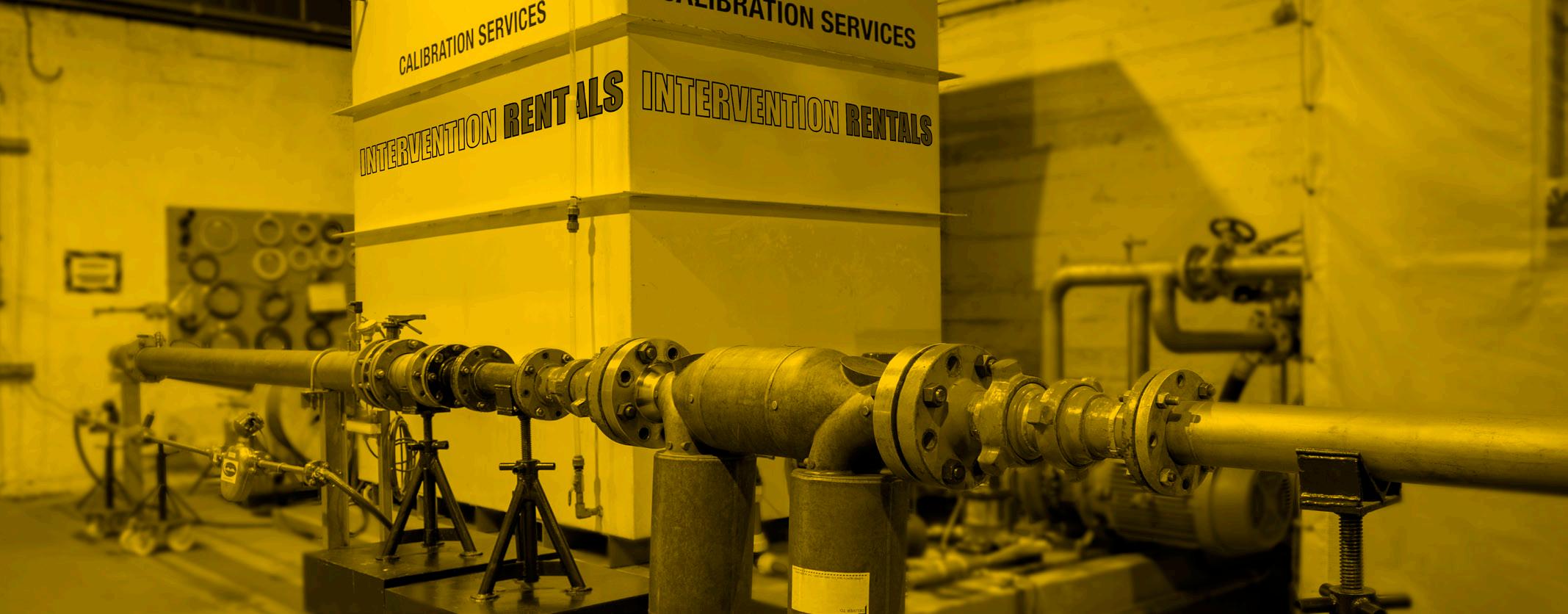
Can you tell us about yourself?
Q Q
A: I manage the Measurement’s business here at Intervention rentals which includes supporting our customer’s needs, budget control, staff training, product research and development.
My work experience over the last 15 years has allowed me to gain mechanical and electrical knowledge relating to diagnosing and repairing various electrical and measurement equipment that we provide from our portfolio.
In addition, over the past 5 years, I moved into a management role which has allowed me to gain essential experience in business and has allowed me to fulfil a key role at Intervention Rentals.
Q
Can you tell us about the Measurements service line?
A: Intervention Rentals are a leader in flow meter hire & calibration services. Our current portfolio of meters covers a wide range of industrial meters & measurement tools used primarily in the Energy and Food & Drink sectors.
We maintain an ‘in-house’ stock of meters and equipment that are available for short or long-term rental periods to ensure we can cover those last-minute call offs to the larger scale project support requirements.
Q
What is the future of your Measurements service line?
A: The future of Measurement is to expand our services within our existing customer base and to attract new customers to our new services. For example our new Small Calibration Loop gives us the capability to calibrate meters from 3/8” to 1 inch to between 3-10 point calibrations depending on customer requirements. We can calibrate Coriolis meters, flowmeters, clamp on meters, electro mag meters.
As this is the only small calibration loop in the North East of Scotland we are already taking customer inquiries and calibrations into this new business.
The large calibration loop does the same high level of service but does it for equipment from 1.5 inches up to 4 inches.


What do you think sets Intervention Rentals Measurements services apart from other suppliers?
A: Intervention Rentals have over 20 years’ experience providing measurement services to the Energy sector where we provide the most competitive service in the market and always receive great feedback from our customers.
In addition, and as mentioned, we have the only measurement loop in this part of the country and regularly provide Calibrations, Pressure testing, Repairs, Inspections, and ATEX inspections/repairs.
We can also calibrate a wide range of equipment with our UKAS accredited deadweight testers such as, N-Vision gauges, Leo recorders, analogue gauges, and transducers
This provides our offshore & subsea, food & drink and Agri customers a local technical specialist to support their thriving industries.
We take great pride in being known by our customers as being a supplier they can rely on and one who makes their operations a priority.





32 www.ogv.energy I May 2024 INNOVATION & TECHNOLOGY
For more information visit www.interventionrentals.com
In the coming months we will see more in the ‘Highlights On’ series from Intervention Rentals, where you will be able to read more about the services on offer from Interventions Rentals and meet some of our team.


Bringing software innovation and data integrity to the industry
At its core, asset55 is a software engineering technology company, bringing together highly experienced industry engineers combined with leading software developers to drive real and positive change within the energy sector.
Aligned across two divisions, Operations & Projects, we enable change through a portfolio of execution specific software, which share two common traits – improving safety and improving productivity to our clients.
Established in 2012, asset55 has grown organically to become a leading and trusted provider of SaaS technology to the wider Energy market whilst maintaining clear objectives to support our customers on critical operations to ensure we go above and beyond expectations on delivery and execution of our services.
At asset55, we foster a culture of ‘incremental innovation,’ where all employees are encouraged to innovate and bring new ideas to the table. Innovation has been instrumental in the development of our four leading software with our industry-experienced engineers understanding existing problems in the industry and working with our
software developers to find an efficient and digitalised solution.
One of the major problems encountered in our industry is the issue of data management. Even the smallest of discrepancies in data can cause detriment to data integrity and in turn, project performance. Major capital projects produce significant volumes of data and a lack of integrated engineering suites leads to reliance on manual processes, significantly increasing the likelihood of data quality issues. The poor data quality and its consequent impact on project performance is often not identified until commissioning and handover. This was a common occurrence exhibited with existing customers on our capital projects software, Execute - which relies on quality data.
So what did we do? We developed the best data validation tool in the industry.

Our ‘Validate’ software creates real-time line of sight of engineering maturity and highlights data inconsistencies, errors and quality risks before they can impact project performance. In succession, our customers reduce schedule, decrease costs and increase productivity and efficiency. Validate provides a true integrated data system ensuring confidence, compliance and consistency of data throughout the project lifecycle.
A real example of the power of Validate? As of August 2022, Validate has been implemented on a project of a major Norwegian operator. In 18+ months, Validate has completed over 3.5 billion validation checks, encountering a staggering 1.2 million findings. As of April 2024, 1.1 million of these finding have been resolved. Validate has ensured that the operating asset can realise its digital initiatives with reduced cost and increased efficiency, with high quality asset metadata. One thing they say is for sure, ‘Data is King’ and our Validate software has certainly become its Kingdom.




33 INNOVATION & TECHNOLOGY
NORSOK Standards Y‐002, 2021 Global operations Identification of components for lifetime extension Failure mode, effects & criticality analysis (FMECA) +44 (0)1670 704 718 Call for details: or visit theimpulsegroup.com Work smarter not harder: save time, money and resource with our asset life extension service. Detailed integrity data analysis, stress & degradation modelling Full monitoring & inspection reports and mitigation/replacement plan DRILL LESS... EXTEND MORE
Enabling Digital Supply Chains in the Energy Industry

The energy industry stands at the precipice of a transformative shift fueled by on-demand manufacturing technologies
In an era marked by dynamic challenges such as supply chain disruptions due to events like Covid-19, container shortages, and the Suez Canal blockage, the allure of on-demand manufacturing lies in its potential to streamline inventory management, reduce environmental impact, and enhance supply chain resilience. At Fieldnode, we recognize the pivotal role of digital supply chains in revolutionizing the energy sector's operational landscape.
Additive manufacturing, or 3D printing, has emerged as a beacon of innovation within the energy industry, showcasing numerous success stories where pressing needs have been swiftly and efficiently addressed. Despite the proven efficacy of this technology, the widespread adoption of on-demand manufacturing and digital inventories at scale remains a formidable challenge. Fieldnode is committed to spearheading this transformation by addressing key barriers to implementation.
Drawing from our extensive experience in

developing the Digital Inventory Ecosystem platform and collaborating with major industry stakeholders, we have identified several critical challenges. Chief among these challenges is the pervasive reluctance to embrace ondemand manufacturing, particularly additive manufacturing, stemming from a lack of trust and understanding of the technology. Additionally, stringent quality assurance and control processes often impede the realization of promising business cases, resulting in lengthy and costly qualification procedures. Safeguarding intellectual property (IP) and ensuring equitable compensation further compound the complexities of digital supply chain integration.
Fieldnode recognizes that offering a Software as a Service (SaaS) platform entails more than just technological innovation. It necessitates a holistic approach that encompasses commercial viability and quality assurance. We have prioritized collaborative engagement with industry stakeholders to solicit input, address concerns, and co-create tailored solutions. For instance, while adherence to
industry standards is paramount, our focus has been on optimizing their utilization to foster scalability and efficiency.
Moreover, Fieldnode has pioneered commercial frameworks in collaboration with industry stakeholders to uphold the integrity of IP rights and ensure fair compensation for innovators and manufacturers. Our platform facilitates content creation, digital part storage, and a marketplace that connects providers of digital parts, engineering services for additive manufacturing design, and an ondemand manufacturing network comprising reputable entities.
Having navigated the additive and on-demand manufacturing landscape for several years, we understand that catalyzing industry-wide transformation requires a centralized hub that orchestrates collaboration, streamlines commercial transactions, and addresses qualification challenges. Fieldnode is uniquely positioned to fulfill this need, empowering energy companies to embrace digital supply chain solutions at scale.

For more information please visit www.fieldnode.com
34 INNOVATION & TECHNOLOGY
www.ogv.energy I May 2024
Intellectual Property (IP) and its role in innovation during the energy transition

The shift from fossil fuels to greener energy will profoundly impact the profitability of many businesses in the energy sector. However, innovation has become an essential facilitator of the energy transition and this shift presents a significant opportunity for innovative energy businesses that are able to adapt to industry changes..
However, innovation often requires significant R&D expenditure, and having a handle on their IP can allow innovative businesses to protect their competitive advantage, and maximise their return on investment (ROI).
Innovation is expensive –how can IP help?
Innovation and technology will play an increasingly important role in shaping the energy transition in the coming years. This may be through cost-reduction developments that allow an accelerated scale-up of low-carbon technology, or through oil and gas companies diversifying their technology offering in view of a changing energy landscape.
However, the R&D associated with innovation is often expensive, and businesses want to know that they will receive a return on capital expenditure. Fortunately, IP rights are assets that can be used in a number of ways to improve profitability and ROI, including:
• Re-deployment of existing IP rights
There are numerous legacy oil and gas technologies finding new purpose in the energy transition. Perhaps most prominent are cabling, connector and buoyancy technologies originally developed for subsea oil and gas operations that are directly transferrable to offshore wind.
Existing IP associated with these technologies may be re-deployed in order to create a valuable revenue stream through the licensing of the IP rights to third parties, or by providing unique value to the market by preventing competitors from offering the innovative technology.
• Patent Box : 10% UK Corporation Tax
In the UK, innovative businesses can reduce their corporation tax to 10% through the UK Government’s Patent Box incentive based
on profits derived from patent-protected products or products incorporating a patented item. This can provide a huge saving when patented technology is commercialised.
• Negotiation leverage
IP rights also provide leverage during supply negotiations. The energy industry supply chain is becoming ever-more competitive, where typically several businesses compete to supply a similar product. If an innovative product is protected by IP rights, competitors can be excluded from the tendering process, or they can be forced to offer alternative, less desirable products.
• Raising capital
It may be the case that capital investment to fund R&D activities or commercialise an innovative technology comes from external investors. Potential investors will want to see a strong IP portfolio in place and a strategy for protecting ongoing developments to prevent copying by competitors.
outset parties to the collaboration should negotiate an agreement that covers all aspects of a party’s IP rights and obligations
Are you free to do what you want to do?
We are currently amidst a global race for green technology development. A recent report [1] highlighted that the top patent applicant countries for offshore wind energy (based on the country of business of the applicant) were China, Republic of Korea, Germany, Japan, USA and Denmark. The same report found that patent applicants from these countries also filed patent applications in other countries.

These patent filing trends can have a significant impact on a business’ ability to develop and commercialise offshore wind technology without infringing third party IP rights. For example, if USA applicants file patent applications in the UK, any resulting IP rights may significantly impact UK businesses.
Who owns what?
Collaboration is essential in order to solve some of the most pressing technical challenges facing the energy industry due to the opportunity to share resources and expertise. Whether collaboration takes place between industry partners, or between industry and academia, one of the most important considerations is to understand, and agree upon, the ownership of any IP generated as result of collaborative R&D. Ownership and/or the right to exploit the IP generated from collaborative R&D will have a huge impact on the ability of a party to the collaboration to improve their ROI. At the
Therefore, businesses should ask if they know what IP their competitors have.
If they don’t, then they run the constant risk of having to stop supplying or using an “infringing” product or may find that time and money in developing a product would potentially be wasted.
Are your competitors free to do what you do?
Ultimately, if your product is not protected by IP, it is open season for your competitors to copy and sell it at will without restriction –and to get a free ride on the back of your time, expertise, and money spent in developing the product and bringing it to market.


[1] Offshore Wind Energy – Patent Insight Report, European Patent Office in collaboration with the International Renewable Energy Agency, November 2023 35 INNOVATION & TECHNOLOGY John Johnston is a Patent Attorney within the Energy Group at HGF, one of Europe’s leading Intellectual Property firms operating across 25 offices in seven European countries. jjohnston@hgf.com
John Johnston

Contracting through the Energy Transition
By 2050, the UK aims to reach a net zero position in respect of emissions and has committed to implementing a range of decarbonisation measures across both commercial and domestic energy use. The oil and gas industry is committed to supporting these aims and investment in clean energy developments is growing on a daily basis.


Aswell as transitioning the UK's energy sources, there is also a need for the oil and gas industry to consider a transition in respect of the contractual agreements used within the industry. Supply chain companies engaged in renewable energies are less familiar with traditional oil and gas contracting forms but equally, with significant elements of clean energy transition occurring offshore, there is a need to maintain certain elements of current oil and gas contracting practice.
An all-energy supply chain?
In light of the intended merging of renewable and oil and gas supply chain offerings, contracting will also require transitioning to a more hybrid format.
Currently renewables projects utilise standard form construction contracts such as the New Engineering Contract (NEC) or the standard form contracts produced by the International Federation of Consulting Engineers (FIDIC).
These forms of agreement offer a high degree of flexibility and customisation through the selection of various options, follow a very particular structure and format and seek to operate on a clause-by-clause basis so that each section will stand on its own merit with no need for cross referencing. They also operate on the assumption that any development is likely to have separate investors who may require additional rights and require additional transparency, using collateral warranties to allow third parties the right to enforce warranty provisions as well as very specific payment and performance requirements, including the use of securities as a matter of course. Moreover, where onshore construction involves any element of design work there are additional regulatory issues which are already addressed within the terms of the standard forms. While these rights can appear in oil and gas contracts they are typically additions rather than s tandard drafting.
Conversely, the oil and gas industry has a long history of using the Leading Oil and Gas Industry Competitiveness (LOGIC) standard forms of contracts. Rather than using optionality, these standard contracts allow for personalisation through the addition of project specific information and bespoke special conditions. The key feature of the LOGIC contracts is the 'knock-for-knock' mutual indemnities approach. Isolating liability to the party most likely to hold insurance and be able to address the loss deviates vastly from the standard position of losses being attributed as a result of fault but in the high risk, high cost nature of offshore oil and gas projects this has consistently been appropriate.
Moving forward there is going to need to be a blending of the two contracting approaches, particularly as Offshore Energies UK has reported, following recent industry analysis, that over three quarters of the UK's existing oil and gas supply gain has direct cross-over with the needs of offshore wind and around ninety percent with carbon transport and storage projects.
Transitioning terms and conditions
The natural next step will be for a hybrid standard form contract to be developed and Offshore Energies UK is looking at ways to adapt LOGIC and generate adapted template forms for clean energy work.
For now, both operators and supply chain companies looking to contract for renewables alongside existing oil and gas arrangements, should consider the use of special conditions alongside typical terms such as LOGIC's on and offshore services model. These special conditions can draw on the NEC and FIDIC models for ensuring regulatory compliance for onshore construction and design works, consideration of payment and performance provisions to allow transparency and fairness and also consider the use of collateral warranty arrangements if appropriate.
To listen to Brodies recent series of energy related podcasts, use the QR code

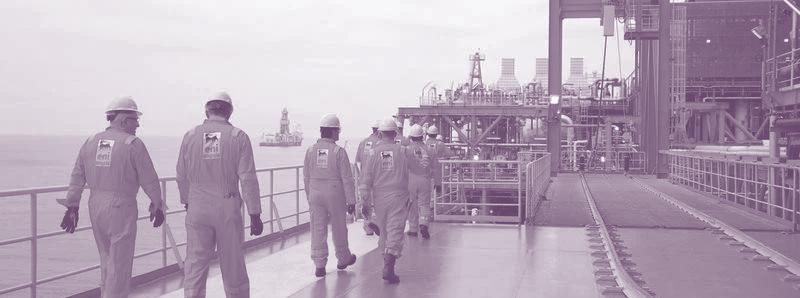
or search for 'Podcasts by Brodies' on Apple Podcasts, Spotify or your usual podcast provider.

Want to know more?
Brodies LLP is a UK top 50, and leading Scottish, law firm with offices across Scotland, the UK and internationally. For more useful insight and details of our energy expertise visit brodies.com
36 LEGAL
Laura Petrie, Partner & Marc Penman, Senior Solicitor Brodies LLP
SPONSORED BY

Leyton is an international consulting firm that helps businesses leverage financial nondilutive incentives to accelerate their growth and achieve long lasting performance.
We simplify your access to these complex incentives. Our combined teams of highly skilled Tax and Technical specialists, enhanced with cutting-edge digital tools developed internally, maximise the financial benefits for any type of businesses.
With compliance always front of mind, we have been delivering optimal services for our clients for over 24 years. This provides peace of mind that you will always receive the maximum benefit, without taking risks. The
Harnessing Waste: Empowering Energy Solutions in the UK

Amidst a global push for sustainable energy, the UK leads in adopting waste-to-energy (WtE) technology.
This shift not only addresses the urgent need for renewable energy sources but also reflects the nation's commitment to combating climate change and fostering a circular economy. By converting waste into energy, WtE reduces reliance on landfills while contributing to energy security and meeting the nation's growing energy demands.
Statistics and Data
Between 2009 and 2022, the cumulative installed capacity of WtE plants in the UK skyrocketed from 381 MW to 1,505 MW, reflecting a robust and accelerating interest in this innovative sector. Furthermore, the volume of waste collected for energygenerating incineration plants by local authorities in England surged from 2,391 million metric tons in 2000/01 to an impressive 12,342 million metric tons in 2020/21. These statistics underscore the growing significance of WtE technology in meeting the nation's energy needs while effectively managing waste.
Market Drivers
Driving this momentum is a series of strategic initiatives and policy frameworks established by the UK government. Committed to achieving net-zero emissions by 2050, the government has implemented various financial support mechanisms, including the Contracts for Difference (CfD) scheme and grants from Innovate UK. Additionally, the Enhanced Capital Allowance (ECA) scheme
By: Israe Rouri
R&D Tax Consultant
offers substantial incentives for investments in energy-saving equipment, further bolstering the attractiveness of WtE projects to investors.
Advancements in Technology
Advancements in thermal treatment processes and sorting technologies have significantly improved WtE processes' efficiency and viability. Breakthroughs in material science, biology, and engineering continue to drive the development of new WtE technologies, expanding sustainable energy production's horizons.
R&D Initiatives
The WtE sector encompasses five main segments, each vital in the UK's strategy to achieve net-zero emissions by 2050. Therefore, research and development (R&D) initiatives are pivotal in propelling WtE technology evolution:
1. Thermal Treatment Processes: Enhancing Energy Efficiency and Emission Reductions
Research and development (R&D) efforts in thermal treatment processes focus on enhancing energy conversion efficiency and minimizing environmental impacts. Novel combustion techniques and reactor designs aim to maximize energy yields while reducing emissions of harmful pollutants. Advanced catalysts show promise in promoting cleaner and more efficient combustion reactions, contributing to significant emissions reductions.
2. Biological Treatment: Optimizing Anaerobic Digestion Processes
In the realm of biological treatment, R&D seeks to optimize anaerobic digestion processes for improved efficiency. Researchers explore microbial communities to identify efficient microorganisms capable of rapid waste degradation and biogas production. Process monitoring and control systems enable realtime optimization, maximizing biogas yields while minimizing operational costs.
3. Landfill Gas Recovery: Harnessing Methane for Energy
R&D endeavors in landfill gas recovery concentrate on maximizing methane capture rates and enhancing energy conversion efficiency. Innovations like membrane-based separation technologies extract high-purity methane from landfill gas streams, providing a sustainable fuel source.
4. Waste Pre-Treatment: Maximizing Resource Recovery
In the domain of waste pre-treatment, R&D efforts focus on developing effective sorting technologies to increase resource recovery. Advanced sorting techniques and innovations in mechanical biological treatment processes optimize waste diversion and energy recovery. Integration of artificial intelligence and machine learning algorithms enables precise waste stream identification and classification, leading to improved output quality and resource recovery rates.
5. Waste-to-Fuel: Transforming Waste into Valuable Resources
R&D in waste-to-fuel technology aims to enhance process economics, product quality, and environmental performance. Novel catalyst materials and reactor designs improve waste feedstock conversion efficiency. Advancements in feedstock pretreatment techniques enable the production of highquality feedstocks, increasing waste-to-fuel process viability.
Impact and Benefits
The impact of R&D investment in WtE technology extends far beyond technological advancements alone. By improving energy efficiency, reducing emissions, and promoting resource recovery, these initiatives contribute to the UK's broader sustainability goals and economic prosperity. With supportive government policies and ongoing innovation, the WtE sector is poised to play a pivotal role in the nation's transition towards a sustainable and low-carbon future.


37 INNOVATION & TECHNOLOGY For more information visit: leyton.com
www.leyton.com
UK’s largest innovation funding consultancy
Experienced



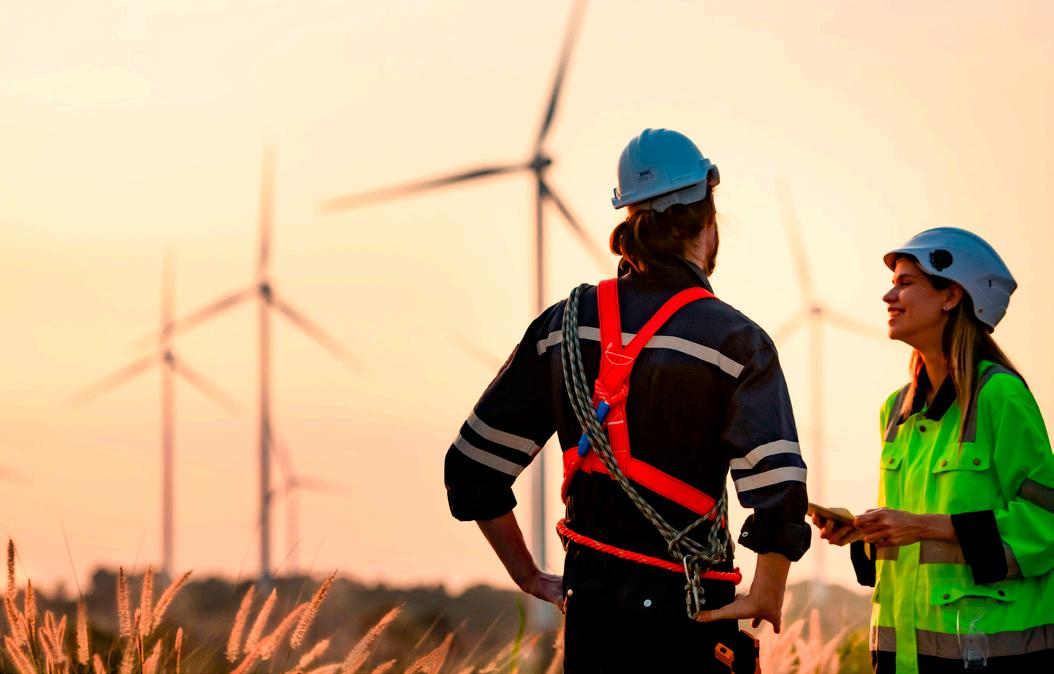




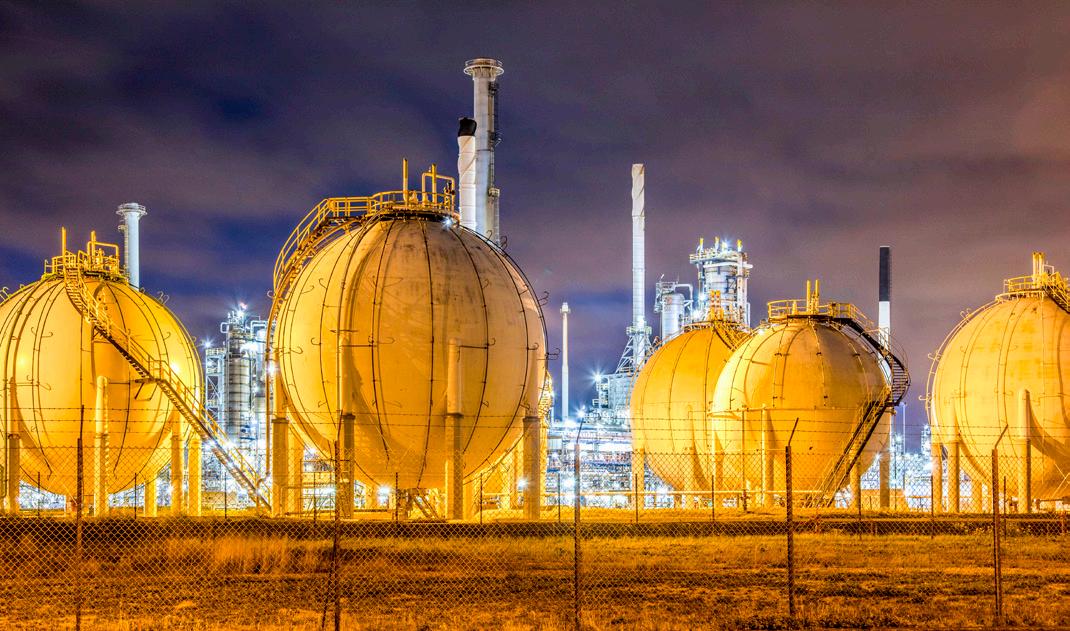
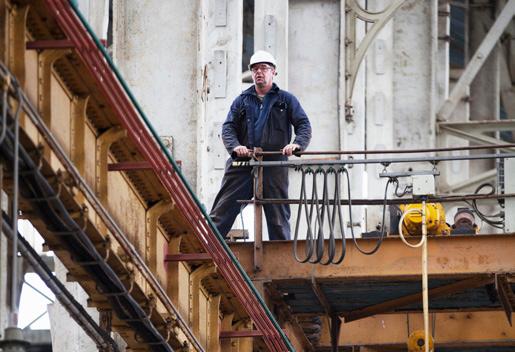


38 www.ogv.energy I May 2024 HEADER Offshore wind Your partner in the energy transition Optimizing the performance of your offshore wind assets to generate and transmit clean power efficiently and sustainably. abb.com XX Social. @ESWL-Ltd Web. eswl-ltd.com
INDUSTRIAL & ELECTRICAL INSTRUMENTATION MOTORS PUMPS VALVES LUBRICANTS GENERAL CONSUMABLES & MUCH MORE
are experts in procurement solutions ranging from sourcing, fixed price agreements, spend analysis and vendor consolidation. Our aim is to streamline your procurement processes, reduce costs and optimise your operations. Aberdeen, UK sales@eswl-ltd.com Houston, USA houston@eswl-ltd.com We are your Global Procurement Partner for all your industrial needs
Your Global Procurement Partner
ESWL
Significant boost for UK floating wind as flagship project Green Volt achieves offshore consent


22 April 2024 Leading offshore wind developers Flotation Energy and Vårgrønn, a joint venture between Plenitude (Eni) and HitecVision, have announced that their pioneering floating offshore wind project, Green Volt, has been granted offshore planning approval.
With onshore consent announced earlier this month, Green Volt has now received all its planning approvals and remains on track to be the first commercial-scale floating offshore windfarm in Europe.
When completed, Green Volt will include up to 35 floating wind turbines, providing up to 560 MW of renewable energy capacity. As part of Crown Estate Scotland’s Innovation and Targeted Oil & Gas (INTOG) leasing round, the project will deliver renewable electricity to oil and gas platforms, replacing existing natural gas and diesel power generation. Green Volt will also provide electricity to the UK grid. Green Volt will reduce carbon emissions by 1m tonnes per annum.
Green Volt is 50% owned by Flotation Energy and 50% by Vårgrønn.
First Minister of Scotland Humza Yousaf said:
“It is great news that we have consented the first project in the Crown Estate Scotland’s Innovation and Targeted Oil and Gas (INTOG) leasing round – this is a significant milestone which will help secure Scotland’s place at the forefront of floating wind technology.
“Scotland is one of the best places in the world to develop offshore wind and its supply chain and we are determined to maximise the huge economic opportunity offshore wind can bring.
“We have already underlined our commitment to making Scotland a global leader in offshore wind by committing to invest up to £500m over 5 years to catalyse private investment in the infrastructure and manufacturing facilities critical to the growth of the sector.
“Investor confidence in Scotland’s renewable sector is growing as illustrated by significant investments in ScotWind leasing rounds and in the ports and supply chain infrastructure facilities that will enable the sector to develop.
“We have a strong record in delivering robust consents, ensuring the right projects are built in the right place at the right time. Ahead of the Allocation Round 6 (AR6) application window closing, the relevant consents and marine licences were issued for two floating offshore wind projects as well as one wave and three tidal energy projects, allowing all of them to go forward.”
Nicol Stephen, CEO at Flotation Energy, said:
“It is fantastic to have received the green light to deliver the world’s biggest floating offshore wind project, right here in the Scottish North Sea. This major milestone places Flotation Energy and our Joint Venture Partner, Vårgrønn, firmly at the heart of the energy transition.
“Gaining consent just over a year after our seabed exclusivity was awarded is a testament to the commitment, speed and determination of our Green Volt team, the Scottish Government and its key agencies.
“Green Volt is of international significance, placing Scotland at the leading edge of a new floating wind sector. This multi-billion pound development can now move forward confidently, creating hundreds of local jobs and proving that the UK and Scottish supply chain is ready to deliver commercial scale floating projects, at pace.
“Flotation Energy is headquartered in Scotland with its roots firmly in Aberdeen and the North East. We are already drawing on the world class energy skills and experience of the region - and now look forward to doing far more.”
Olav Hetland, CEO at Vårgrønn, said:
“With Green Volt being Europe’s first commercial-scale floating wind project, achieving offshore consent for the project marks an important moment for the whole offshore wind industry. At 560 MW, Green Volt serves as an essential stepping stone from current small-scale projects to gigawatt-size developments, supporting the supply chain in scaling up new technology.
“Floating wind is set to be a huge global market in the decades to come. By being a frontrunner, Scotland is now positioned to be home to worldleading expertise and a whole industry of new jobs. Green Volt will deploy pioneering technology at an unprecedented scale, advancing what is possible in renewable energy.”
Sir Ian Wood, Chair of ETZ Ltd, said:
“The awarding of consent for the Green Volt INTOG project is a massive boost for Scotland’s ambition to be a global leader in floating offshore wind. This decision will unlock around £3 billion of investment, generate hundreds of jobs and will effectively result in Europe’s first commercial scale floating wind development. Crucially, it also sends a huge signal to domestic and international investors that Scotland is indeed a pioneer in this technology and the ideal location to manufacture and deliver floating wind developments.
“I pay tribute to the Scottish Government and its agencies for taking this welcome decision which follows the opening of the world’s first Floating Wind Innovation Centre in Aberdeen by the First Minister last month. With one of the largest concentrations of subsea engineering capabilities anywhere in the world and the largest cluster of energy supply chain companies anywhere in the UK, there truly is no better location than the North East of Scotland to invest in low carbon technologies.”
As part of the North Sea Transition Deal, oil and gas operators have agreed to deliver 50% reduction in offshore greenhouse gas emissions by 2030. A new emission reduction plan published by North Sea Transition Authority in March 2024 places electrification of offshore platforms at the centre of emissions reductions.
As Green Volt moves forward with its development, the project remains committed to engaging with on and offshore stakeholders, upholding rigorous environmental stewardship practices.


39 RENEWABLES OGV Renewables Sponsored by: new.abb.com/process-automation/energy-industries

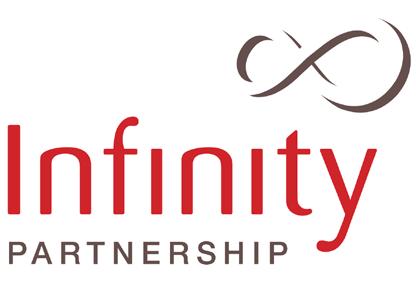
Infinity Partnership is an award-winning, multi-disciplinary accountancy and business advisory practice, with a proactive approach to customer service.
Infinity has been a five-time winner at the British Accountancy Awards and has been a three-time finalist at the Scottish Accountancy Awards in recent times.
Kent wins contract with Repsol Norge

Kent, an integrated energy services provider, has been awarded a comprehensive three-year framework contract with Repsol Norge for various operations in the Norwegian sector of the North Sea. This contract encompasses a wide range of critical services including Studies, Specialist Engineering Support, EPCI (Engineering, Procurement, Construction, and Installation) packages, and the provision of structural integrity and analysis services.
Kent brings to the table over 40 years of providing structural integrity services across offshore assets. This depth of knowledge will allow Kent to enhance service delivery for Repsol Norge, underscoring a long-standing partnership that has seen Kent deliver structural integrity management support over the years.
Commenting on the award is Les Newman, Managing Director of Engineering & Consulting, UK at Kent: "We are immensely proud to have been selected for this prestigious contract, which not only exemplifies our leading-edge capabilities in the offshore engineering domain but also strengthens our enduring relationship with Repsol Norge and its assets for over 20 years. This achievement is a testament to our team's hard work, dedication, and the innovative solutions we bring to our clients."

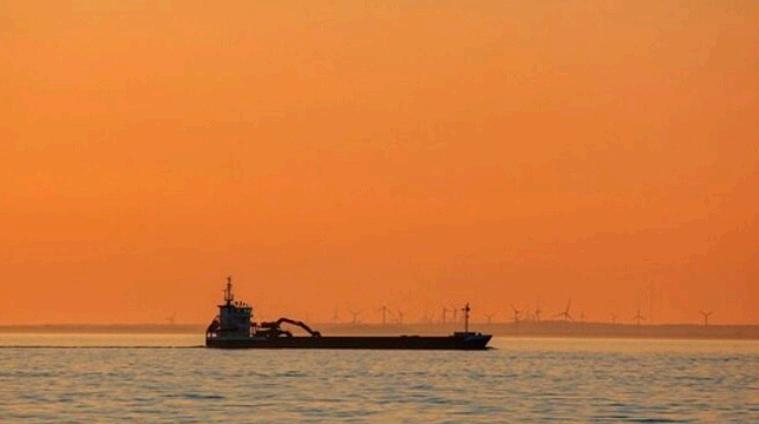
MODEC has bagged the front-end engineering and design (FEED) contract for a floating production, storage, and offloading (FPSO) system related to Shell’s Gato do Mato project in Brazilian waters.
The award was given by Shell’s subsidiary Shell do Brasil.
Under the contract, MODEC will handle the design of the hull and all associated topsides facilities for the Gato do Mato FPSO. The production vessel is expected to be moored by a SOFEC Spread Mooring system.
It will be tied at a water depth of around 2,000m, nearly 250km off the Brazilian coast.
The stabilized crude produced from the Gato do Mato development will be stored in the tanks of the FPSO. The oil drawn from the field will be delivered to the market using shuttle tankers.
To date, MODEC has executed 16 FPSO projects intended for Brazilian waters. Currently, the company has two more vessels under construction.
The FPSO Gato do Mato represents the second unit to be directly delivered by MODEC to Shell for operation in Brazil. The first FPSO delivered by MODEC to Shell for FPSO Fluminense, which has been operating in the Bijupirá and Salema oil fields in the Campos Basin since 2003.

Petrofac has been awarded a contract extension by bp, continuing support across its North Sea portfolio.
Maintenance and engineering services will be provided under the terms of the three-year, multi-million-dollar contract.
Chief Operating Officer of Petrofac’s Asset Solutions business, Nick Shorten said: “Petrofac has supported bp in the North Sea for 15 years. This award is testament to delivering shared goals of increased efficiency and asset life extension. We look forward to continuing this relationship, delivering safe and reliable operations.”
www.ogv.energy I May 2024 40
Infinity
Partner in Business www.infinity-partnership.com SPONSORED BY CONTRACTS
Partnership: Your
Petrofac relationship with bp continues with North Sea contract extension
MODEC wins FEED contract for FPSO Gato do Mato from Shell
Odfjell Technology secures two-year whipstock services contract with TPAO

Odfjell Technology, an integrated supplier of well services technology and engineering solutions, has been awarded a two-year contract by state-owned oil company, Türkiye Petrolleri Anonim Ortaklığı (TPAO), for the provision of 10 whipstock systems and related services.
Odfjell Technology will supply whipstock and anchor systems, and will be providing services for both open and cased holes requirements. The contract serves TPAO’s onshore activity, primarily located in the eastern and southeastern regions of Türkiye, and includes an option to extend by a further two years.
The whipstock systems will be delivered to TPAO stock and related service tools will be mobilised from Odfjell Technology’s Romania facilities when required.
“Having worked with TPAO for several years already, this is a significant contract which emphasises our track record and commitment to delivering localised expertise and services to the wider region,” said Alex Gomoescu, VP Continental Europe at Odfjell Technology. “We pride ourselves on the agile, dynamic and extensive services we provide across our global well intervention services. The reliable and high-quality service our expert teams deliver enabled the continuation of work with TPAO and we look forward to further strengthening our relationship with the company in the coming years.”
TPAO performs oil and gas exploration, drilling, well completion and production. With over 200 wells across 44 rigs, the national oil company’s primary goal is to reduce Türkiye’s oil and gas import.
“We have been working with Odfjell Technology in recent years on spot requirements where we have an immediate need, and always received high quality services,” said Mehmet Uğur Anadut, Material Planning Manager at TPAO. “Having a reliable partner for such an ad-hoc requirement for the next two years will be instrumental in supporting operations planning.”
DeepOcean secures subsea services agreement from Equinor
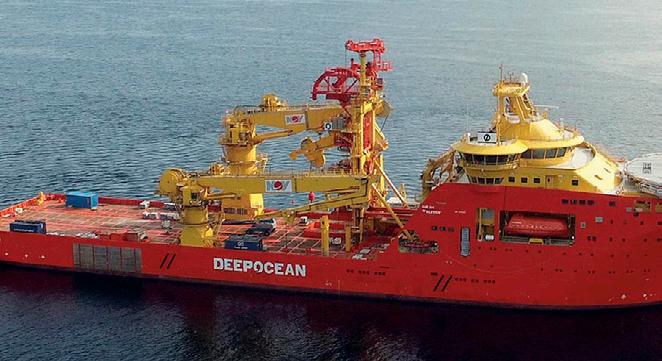
Under the agreement, DeepOcean will be responsible for work on subsea pipelines, structures and high-voltage cables for offshore renewables and oil and gas fields, reports GlobalData.
The four year agreement will be applicable for Equinor’s operations on the Norwegian Continental Shelf and for planned international projects, as well as for contingency work for Pipeline Repair and Subsea Intervention (PRSI) Pool members.
The PRSI Pool comprises 23 energy companies that manage their offshore pipeline and power cable repair contingencies collectively.
The agreement has options for extensions up to four additional years.
DeepOcean plans to manage the contract work from its Haugesund office in Norway.
DeepOcean European operation Managing Director Olaf A Hansen said: “Such a long-term agreement allows us to constantly evolve working methods, collaboration models and technologies, with the objective of making offshore operations and subsea cable repair work as cost-effective as possible.
“We look forward to supporting Equinor and the PRSI Pool members over the coming years.”
The agreement includes both planned and unplanned marine services related to subsea high-voltage cables for offshore renewable energy fields.
It also employs planned or unplanned marine services using re-mote-operated intervention methods with or without the PRS equipment for work in the offshore oil and gas industry.
DeepOcean may also conduct engineering or preparedness studies as required by Equinor or other PRSI Pool members.
DeepOcean offshore renewables Director Normann Vikse said: “DeepOcean has a 400 people-strong engineering team that are specialists on solving subsea challenges across industries."

Oslo-listed jackup rig pure-play
Shelf Drilling has received a notice of suspension of operations from an undisclosed Middle Eastern customer for four of its rigs.
The company is in active discussions with the customer to determine which rigs will be suspended and the exact timing of the suspensions.
Shelf Drilling said that it would have the right to actively market the rigs to other customers and opportunities and to terminate the applicable contracts during the suspension period.
The offshore driller believes that the suspensions will impact the company’s financial guidance given in Shelf Drilling’s reports in the fourth quarter of 2023. Once precise details on the rigs and timing are known, it will assess the impact of the suspension notice and provide an update to the guidance as part of its first quarter of 2024 reporting.
Even though the rigs and the client are not known, the company’s fleet status report from March this year points to Saudi Aramco as the possible client as it is the only Middle Eastern client with four or more rigs working for it.
Subsea7 awarded subsea contract

Subsea7 today announced the award of a sizeable1 contract that will be recognised in the backlog of its Subsea and Conventional business unit in the second quarter 2024. The contract is subject to final investment decision, expected in the coming weeks. Offshore activities are scheduled for 2026.
No further details are disclosed at this time due to contractual obligations.


41 CONTRACT AWARDS SPONSORED BY CONTRACTS Contracts for Shelf Drilling jackup quartet suspended
BRENT OIL PRICES OVER THE YEARS
Brent Oil Column May 2024 Today's Price $86.86

1 YEAR AGO

1 Year Ago - $74.54
Brent oil prices fell for the third straight week after a sharp fall earlier in the month ahead of benchmark interest rate rises and on concern that the U.S. banking crisis would slow the economy and sap fuel demand. Expectations of potential supply cuts later in the year provided some price support

5 YEARS AGO
5 Years Ago - $73.09
After finishing on a three-month low, oil prices continued to slide and were on course to to end the month of May with the largest global drop since November the previous year. This was due to trade tensions weighing on investors’ outlook on the global economy and oil demand.

10 YEARS AGO
10 Years Ago - $110.35
The price of oil rebounded to just above the $110 mark on renewed tension in Ukraine and weakness in the dollar. Russian president Vladimir Putin created tensions with Ukraine by warning his country wouldn't deliver gas to its neighbor unless it receives payment in advance, part of a dispute over an unpaid energy bill.

www.wellsafesolutions.com

SAFE, SMART & EFFICIENT
The complete package for well decommissioning
Well-Safe Solutions provides a groundbreaking approach to the safe and costefficient decommissioning of on and offshore wells. We offer a specialist well abandonment service that allows operators to meet the challenges and regulatory imperatives around decommissioning, while significantly reducing costs.
UK North Sea decommissioning estimate drops nearer $49 billion target
The estimated cost to companies of decommissioning oil and gas infrastructure in the British North Sea has fallen to close to a target of nearly 40 billion pounds ($49 billion).

Production in the North Sea
in the 1960s, making it a petri dish for other fossil fuel extracting regions trying to bring down the cost of dismantling wells, platforms, pipelines and other oil and gas assets.
While companies are the first in line to pay, taxpayers can be asked to foot the bill if they do not have the money. Tax incentives for decommissioning also affect public coffers.

The North Sea Transition Authority, the sector regulator, said in a report on Thursday it estimates a total bill of around 44.5 billion
This compares with an estimate of around 60 billion pounds in 2017 and the sector's target of reducing the cost to 39 billion pounds, which was pencilled in for end-2022.
"The Covid-19 pandemic has undoubtedly had a negative impact on progress, and it will be challenging to achieve the ambitious 35%
"The sector can achieve further cost reductions, though it must do so against a challenging global economic outlook."
A large chunk of costs has been saved by infrastructure owners clubbing together to plan big campaigns for decommissioning wells, the biggest cost factor, rather than on a project-by-project basis, the NSTA said.
Another approach is to reuse old fields and pipelines offshore for storing carbon siphoned off industrial processes.
The proportion of decommissioning spending compared with operating spending on oil and gas fields in the UK North Sea is expected to rise from just over a fifth over the next ten years to almost half over then next 30-40 years, NSTA said.
SPONSORED BY
basin started
target set by the NSTA by the end of 2022," NSTA said.
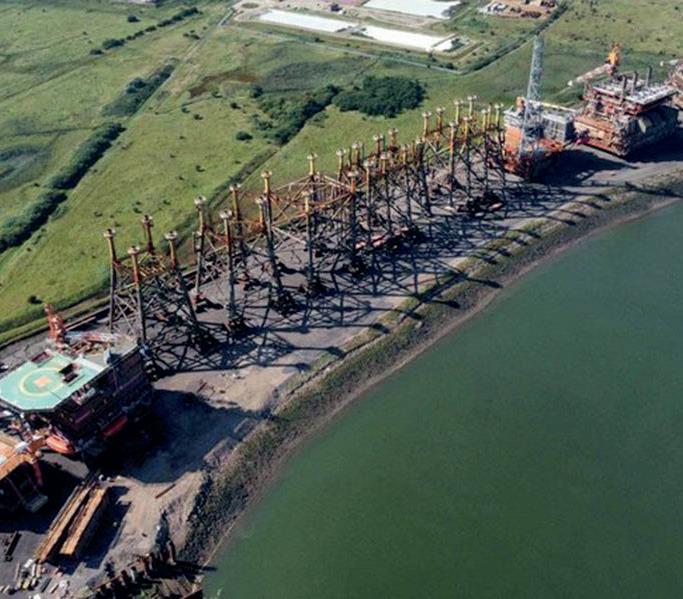
Offshore oil and gas industry to foot $6.9 billion decommissioning costs under new BOEM regulation
On Monday, April 15th, the Department of the Interior announced a final rule from the Bureau of Ocean Energy Management (BOEM) that requires the oil and gas industry to raise nearly $7 billion for decommissioning offshore platforms.
The final Risk Management and Financial Assurance for OCS Lease and Grant Obligations rule amends existing regulations by substantially increasing the level of financial assurances that operators must provide in advance.
The new rule establishes two metrics by which BOEM will assess the risk that a company poses for American taxpayers:
• Financial health of a company. The rule streamlines the number of factors BOEM uses to determine the financial strength of a company by using a credit rating from a Nationally Recognized Statistical Rating Organization, or a proxy credit rating equivalent.
• Reserve value. BOEM will consider the current value of the remaining proved oil and gas reserves on the lease compared to the estimated cost of meeting decommissioning obligations. If the lease has significant reserves still available, then in the event of a bankruptcy, the lease will likely be acquired by another operator who will assume the plugging and abandonment liabilities.
Companies without an investmentgrade credit rating or sufficient proved reserves will need to provide supplemental financial assurance to comply with the new rule.
Additionally, the rule clarifies that current grant holders and lessees must hold financial assurance to ensure compliance with lease obligations and cannot rely on the financial strength of prior owners. BOEM continues to maintain its ability to pursue prior lessees to meet decommissioning obligations.
Under the new rule, BOEM estimates the oil and gas industry will be required to provide $6.9 billion in new financial assurances. To provide the industry with flexibility to meet the new financial assurance requirements, BOEM will allow current lessees and grant holders to request phased-in payments over three years to meet the new supplemental financial assurance demands required by the rule.
“The offshore oil and gas industry has evolved significantly over the last 20 years, and our financial assurance regulations need to keep pace,” said BOEM Director Elizabeth Klein.

Biden administration aims to increase industry responsibility for decommissioning
drilling platforms
The Biden administration on Monday finalized a new rule it says will reduce taxpayer responsibility for the process of decommissioning offshore oil and gas platforms.
The decommissioning process is the final step in offshore fossil fuel extraction and involves dismantling the drilling platforms and returning the area to its predrilling state.
Under existing regulations, taxpayers are responsible for any costs associated with the process that the companies themselves do not cover.
The final rule would amend the regulation, simplifying the process by which it assesses a fossil fuel company’s finances and its responsibility for decommissioning. The Bureau of Ocean Energy Management (BOEM) estimated the rule would require $6.9 billion in new financial guarantees from the fossil fuel industry.
Earlier estimates from the Government Accountability Office (GAO) project that the full decommissioning process costs about $40 billion to 70 billion, while the government had only secured about $3.5 billion in industry assurances under the existing rules.
“This final rule updates, simplifies and strengthens outdated requirements to ensure that taxpayers are protected and current operators are held responsible for their end-of-lease cleanup obligations on the Outer Continental Shelf,” Interior Secretary Deb Haaland said in a statement.
However, the advocacy group Earthjustice criticized the rule for not going far enough in addressing the outstanding costs, noting that the additional $6.9 billion would still leave about $30 billion unaccounted for.


43 DECOMMISSIONING DECOMMISSIONING SPONSORED BY
Offshore Field Development Update
Offshore O&G-related engineering, procurement and construction (EPC) contract award value year-to-date is estimated at approximately US$8 billion (excluding letters of intent), of which contracting activities in the last 30 days have been driven by the announcement of a final investment decision (FID) at OKEA’s Brasse field (to be renamed Bestla) offshore Norway. OKEA awarded Aker Solutions a contract relating to the host field’s platform topside modification work scope, whilst Subsea 7 and OneSubsea were awarded a contract for the subsea work scope for the two subsea well developments tied back to the Brage platform located approximately 13km away.
Offshore Vietnam Mitsui Oil Exploration announced that FID has been taken, and related contracts have been concluded for the PetroVietnam-operated Block B project. Production capacity is estimated to be 490mmcfd, with production scheduled by the end of 2026. In 4Q 2023, McDermott confirmed that in consortium with Petrovietnam Technical Services Corporation, it had received a limited letter of award from Phu Quoc Petroleum Operating Company for engineering, procurement, construction, installation (EPCI), and hook-up and commissioning services for the Block B gas development valued at over US$1 billion. Offshore the Philippines, Malampaya Energy announced a contract award to OneSubsea for the supply of wellheads, Christmas trees, control equipment and a subsea production system for the Malampaya Phase IV development. The two deepwater wells will be tied back to the Malampaya Shallow Water Platform, with first gas scheduled for 2026.
Other contract awards recorded during the period under review include the announcement from Seatrium that it secured contracts valued at approximately US$350 million for the conversion and upgrade of various vessels and facilities, which includes a contract from MODEC for the maintenance and upgrade of its Pyrenees Venture floating production, storage and offloading (FPSO) unit currently installed at Woodside Energy’s Pyrenees Development offshore Australia.
Looking forward, Westwood forecasts a further US$51 billion of offshore O&G-related EPC spend for the remainder of 2024, driven by c.240 subsea trees, c.3,400km of subsea umbilicals, risers and flowlines (SURF), c.3,600km of pipelines, c.120 fixed platforms and 13 FPS units. Key projects anticipated to be sanctioned in 2Q 2024 include Energean’s Katlan project (Israel), Shell’s Bonga North (USA), Petrobras’ Atapu & Sepia II project (Brazil), Pecan Energy’s Pecan field (Ghana) and Eni’s Maha & Merakes East fields offshore Indonesia.
Offshore Drilling Rig Update
The global committed jackup count averaged 415 units in March. Marketed available and cold-stacked jackup counts now stand at 26 and 58 respectively, with marketed committed utilisation and total utilisation at 94% and 83%, respectively. During the month, a total of seven contracts were awarded, amounting to 2,346 days (6.4 rig years) of backlog added. GEMPETCO has awarded a two-year extension to Shelf Drilling’s Rig 141 for US$51 million, of which one year will be farmed out to Petrogulf Misr.
The global committed semisubmersible count stayed around 65, with 14 available and cold-stacked rigs remaining in the fleet. Marketed committed utilisation stayed at 82% with total utilisation rising to 70% during the month. Diamond Offshore’s Ocean Monarch was sold to undisclosed buyers in March to be recycled after being cold stacked since April 2022.
Finally, the global drillship count increased to 84 units during the month, leaving four marketed rigs available plus 13 cold-stacked units. Marketed committed utilisation dipped to 95% with total utilisation sustaining at 83%. BP declared the option for Ocean BlackHornet for US$350 million. The rig will be working in the Gulf of Mexico until February 2027, with the extension commencing in direct continuation of its current charter.
Offshore Wind Update
Since the last update, no new turbine contracts were awarded, however, FID was taken on the 924MW Sunrise Wind project located offshore the US. A Record of Decision (RoD) was also granted for the project by the US Bureau of Ocean Energy Management (BOEM).
Dominating headlines was news that the UK's Contracts for Difference (CfD) Allocation Round (AR6) officially opened. £800 million (US$1.02 billion) has been set aside for fixed bottom offshore wind, which will compete in its own pot. Floating offshore wind will compete in a separate pot with other technologies and a total of £105 million (US$134 million) has been set aside for this pot.
Finally, several project transactions closed in the past month. Shell sold its 50% stake in the SouthCoast Wind projects located in the US to its joint venture partner OceanWinds for an undisclosed sum. The deal with Ocean Winds was structured to simultaneously sign and close, with an immediate effective date. Vattenfall also completed the sale of the Norfolk Boreas and Norfolk Vanguard wind farms located offshore England, UK. RWE purchased the full rights to both projects and Vattenfall stated that the agreed purchase price corresponded to an enterprise value of £963 million (US$1.22 billion).

Global Energy Group
are specialist providers of detailed market intelligence for the
www.westwoodenergy.com

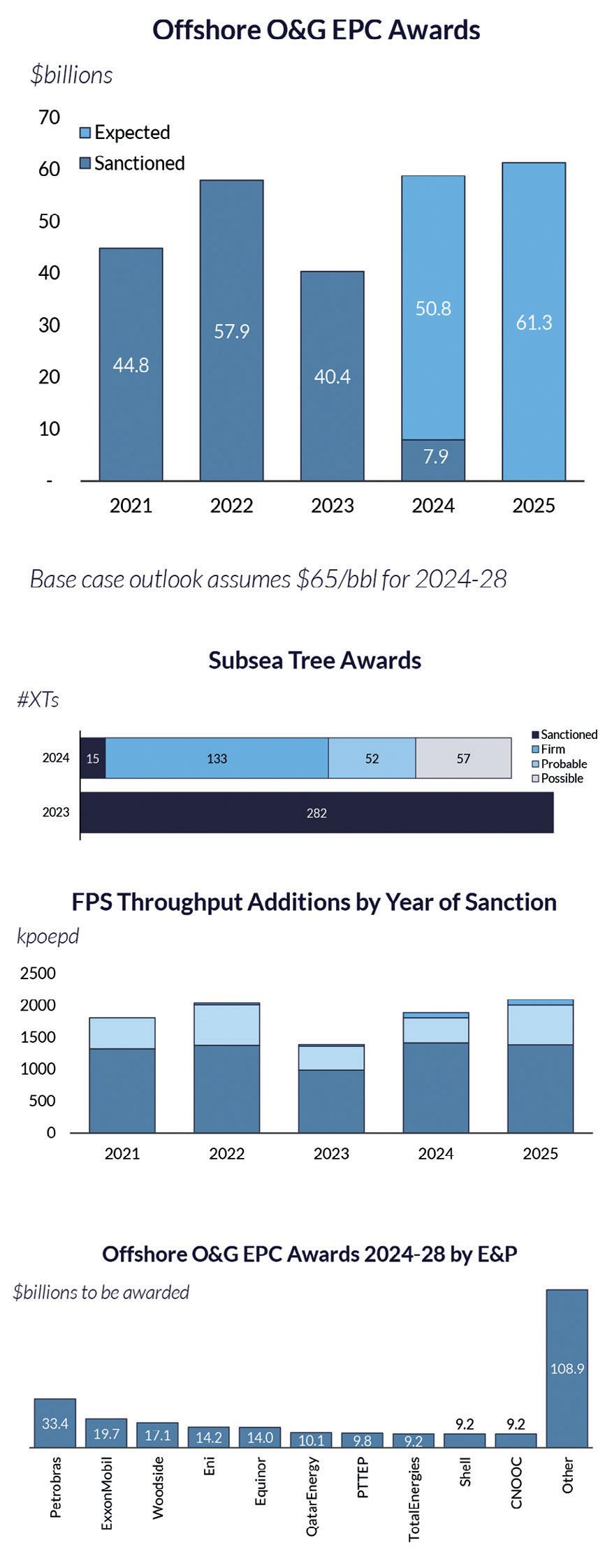

44 www.ogv.energy I May 2024
ANALYTICS STATS & ANALYTICS PROVIDED BY
STATS &
Westwood
offshore energy sector,
offshore rigs, production facilities, subsea equipment, subsea services, offshore marine and offshore renewables
power.
covering;
and
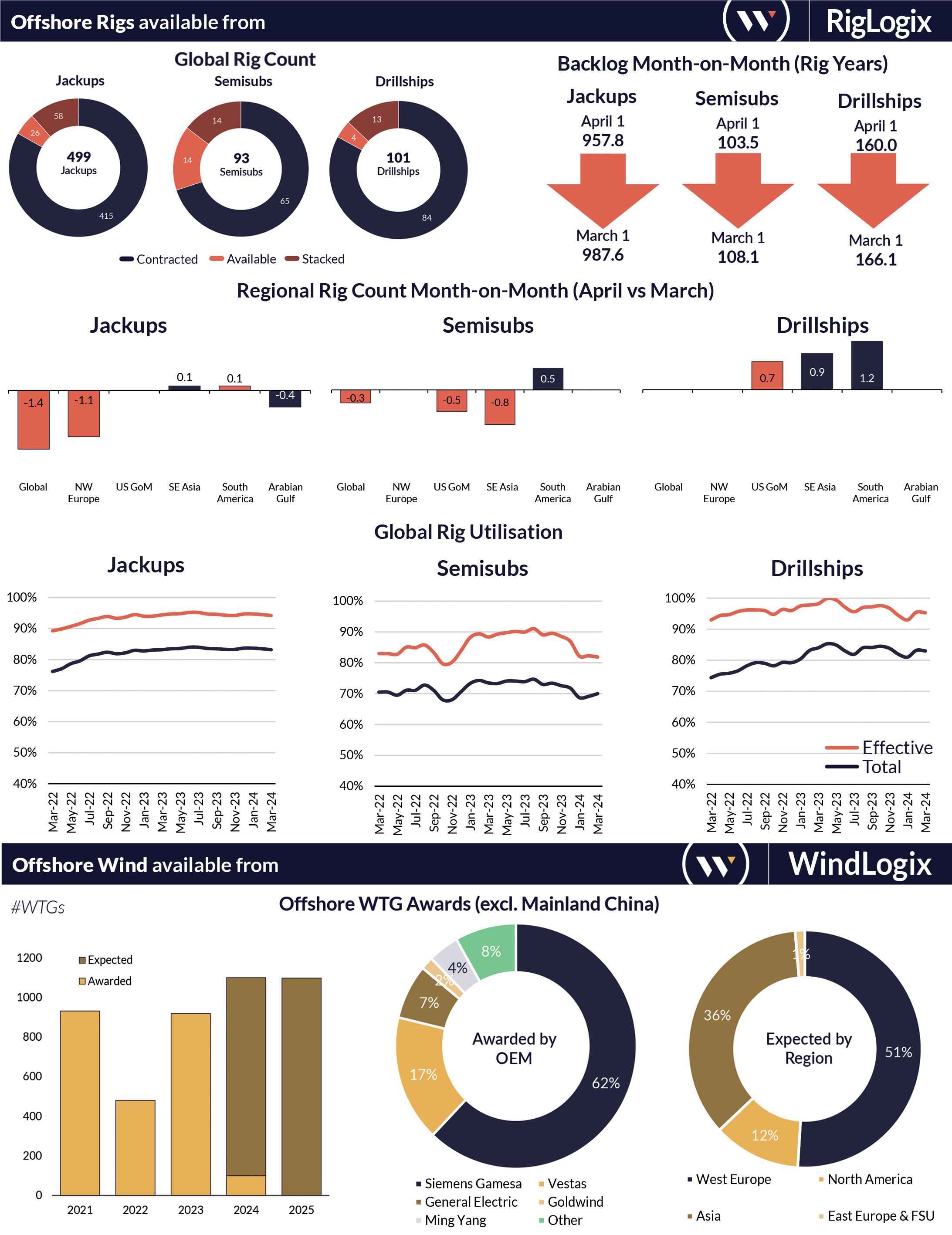


45 Offshore Energy Services Dashboard March/April 2024 STATS & ANALYTICS SPONSORED BY



Offshore Technology Conference
6 May 2024
Houston, USA
E-TECH Europe 2024
7-8 May 2024
Bologna, Italy
Canada Gas & LNG
7 May 2024
Vancouver, Canada
Next Mobility Exhibition
8-10 May 2024
FIERAMILANO - RHO
CLEANPOWER 2024
Conference & Exhibition
6-9 May 2024

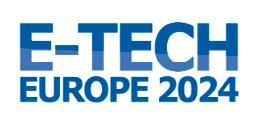



Minneapolis, Indianapolis, United States
Oil & Gas Conference Uzbekistan - OGU
14-16 May 2024
Tashkent, Uzbekistan

How technology is transforming the future of travel management

Technology has transformed the landscape of modern travel management as we know it. Travel management companies have leveraged technology to develop solutions that streamline the booking process, enhance traveller safety, optimise travel spend, and improve policy compliance for marine and energy businesses. So, what now?

Future Mobility Asia Exhibition and Summit
15-17 May 2024
Bangkok, Thailand
ACT Expo
20-23 May 2024


Las Vegas, Nevada, United States
Oil and Gas IOT Summit
22-23 May 2024
Lisbon , Portugal
Lisbon Energy Summit & Exhibition
27-29 May 2024
Lisbon , Portugal


Japan Energy Summit & Exhibition
3-5 June 2024
Tokyo, Japan


The future of travel is bright and with technology playing a pivotal role of shaping this trajectory, we look at some of the key trends that we see emerging in the market.
Mobile technology
Mobile technology will remain the focus of growth in the travel industry. Mobile applications are quickly becoming the central hub for managing all aspects of travel. Whether an individual traveller or a whole crew, ATPI’s ‘On the Go’ and ‘CrewHub’ apps can help streamline the travel process, from booking flights and accommodation, to receiving real-time travel updates and customer support, mobile apps are quickly becoming a one-stop shop for travel organisation.
Sustainability
Sustainability has very quickly become a top priority for many businesses. A travel management company can offer the most eco-friendly travel option for your journey. From booking flights with a lower carbon footprint to offsetting your travel emissions, companies are starting to have increased opportunities to make travel more sustainable. ATPI have created a CO2 measurement, reduction and offset service that is designed by travel management experts to empower

your organisation. By partnering with worldleading offsetting projects, ATPI can support you in building sustainable travel solutions that are effective and easy, aligning with your corporate objectives.
Personalisation
Personalisation is becoming increasingly prevalent as businesses attempt to provide a better travel experience for their employees. By using advanced algorithms alongside artificial intelligence, personalised travel experiences can be produced based on individual preferences, past behaviours, and a company’s travel policy. This result in a more satisfying and safer travel experience for employees.
Enhanced support and traveller safety
Duty of care is a top priority for businesses, especially within the marine and energy realm. Travel management companies recognise the importance of the safety of employees and can offer real-time support within ‘everyday’ mobile apps.

ATPI offers an integration with What’s App and Microsoft Teams that allows the traveller to communicate with the travel management company alongside invoicing, itineraries and personal preferences.
If you would like to find out how ATPI can help streamline your travel management, email: atpienergytravel@atpi.com

www.ogv.energy I May 2024 46 Your Trusted Global Travel Partner HEADER www.ogv.energy/events VIEW ALL EVENTS AT UPCOMING GLOBAL EVENTS May 2024


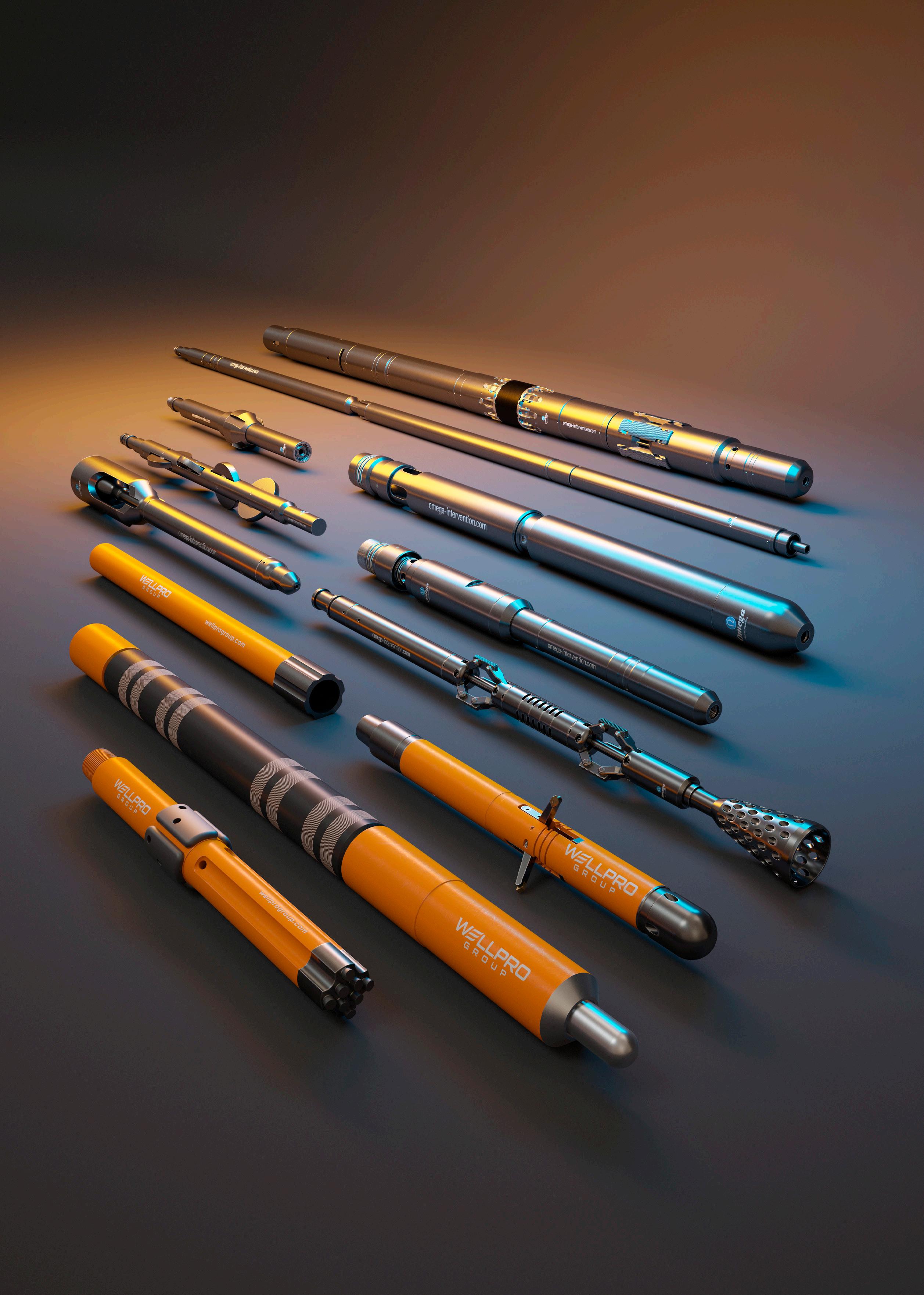
























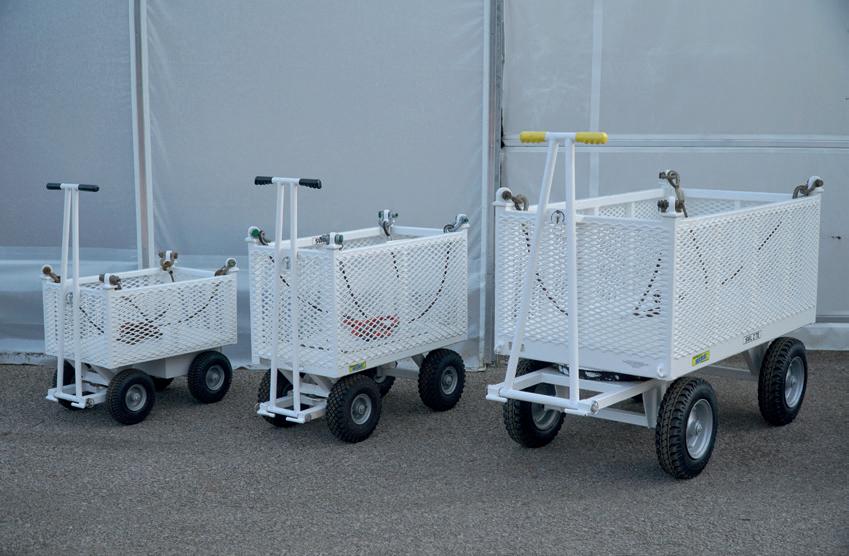











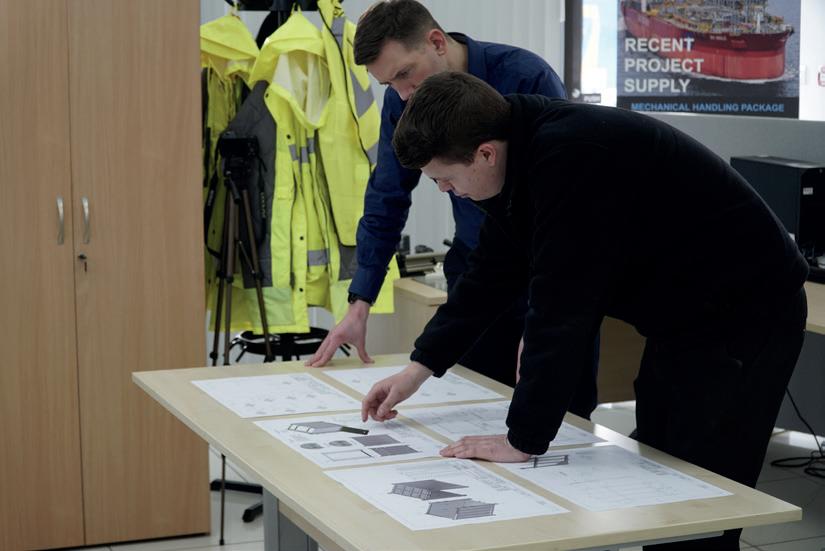

Design Manufacture Supply Hire Service Inspection +44 (0)1224 775774 www.safelift.co.ukBD +44 (0)1224 775774 www.safelift.co.uk Safelift is a globally recognised market leader in the design, manufacture and supply of a wide range of safety orientated, lifting, handling and containerised equipment to the energy sector All your lifting, handling requirements and services in one place 30 YEARS Service to the Offshore Energy Industry









































































































































 By Tsvetana Paraskova
By Tsvetana Paraskova






























 | by DR. THOMAS
BARTHOLOMEW GRANT Data Scientist, Cegal
| by DR. THOMAS
BARTHOLOMEW GRANT Data Scientist, Cegal




































































































































